Brief
How to help and motivate technology companies in Jiangsu, Zhejiang and Shanghai in China to reduce carbon emissions and become carbon neutral through a visual way, so as to slow the rate of global sea level rise?
WHY? (Intro/Context/Rotational)
London, New York and Shanghai could all be threatened in the future as sea levels around the world rise much faster than expected due to accelerated melting in Greenland and Antarctica, according to new research. At the same time, China released the latest China Sea Level Bulletin, showing that the rate of sea level rise along China’s coast from 1980 to 2018 was 3.3 mm per year, higher than the global average for the same period. (BBC NEWS) Bill Gates in his new book How to Avoid a Climate Disaster: The Solutions We Have and The Breakthrough We Need: In addition to cement, steel and plastics, which are the basis of industrialization (31% of total carbon emissions), electricity production and storage, such as coal and gas power generation, it is the second largest emitter of greenhouse gases, accounting for about 27% of the global total. Technology is an industry that closely connected with electricity production. it is easier to change than any other one because it never stop being updated all the time and highly sensitive to the environment. According to the Chinese government’s 14th Five-year Plan, carbon emissions will peak by 2030 and become carbon neutral by 2060, which is of great significance for the world to achieve the goals set out in the Paris Agreement. Although it is uncertain whether this goal can be achieved, it is very meaningful for my project to see the government’s support for the concept of carbon neutrality.
WHO?
My audience will be the staff who work in technology companies located in Jiangsu, Zhejiang and Shanghai(JZS). As one of the three major cities in China and a developed neighboring region, it has a large number of companies, broad platforms, which is very conducive to the research and implementation of carbon neutrality. Besides, they are not only audience but also primary participants, because more relative technology method will be created by them, then share or sell the fruits of their labor with companies in other industries.
HOW
In terms of content, I would like to try to establish a platform that evaluates carbon neutrality based on ISO14064 standards for greenhouse gases.
1. Quantification and reporting of GHG emissions and guidelines (determination of emission limits, specific measures/activities implemented by companies)
2.Prediction, monitoring and reporting of carbon emissions in the project
3.Plans, evaluations and reports generated by third parties.
4.Reward and punishment mechanisms, such as carbon credits needed by large-scale event organizations, should establish a carbon neutral enterprise platform, similar to the concept of company listing. If a certain carbon credit value can be reached, they can enter the platform.
In terms of presentation, I want to design a functional APP for enterprises and companies, which can effectively meet the content requirements, facilitate data collection and the performance of various data and information, and have high requirements for the establishment of interactive mechanisms and data visualization.
In addition, for individual users outside the enterprise, I plan to mainly spread and tell the concept of carbon neutrality. I want to try to use a new interactive form of Touch design to show the audience what carbon neutrality is through human-computer interaction, and help people understand how carbon neutrality can improve the climate (sea level rise) and how companies with the capacity to change will set up carbon neutral projects in a metaphorical way.
Study Plan:
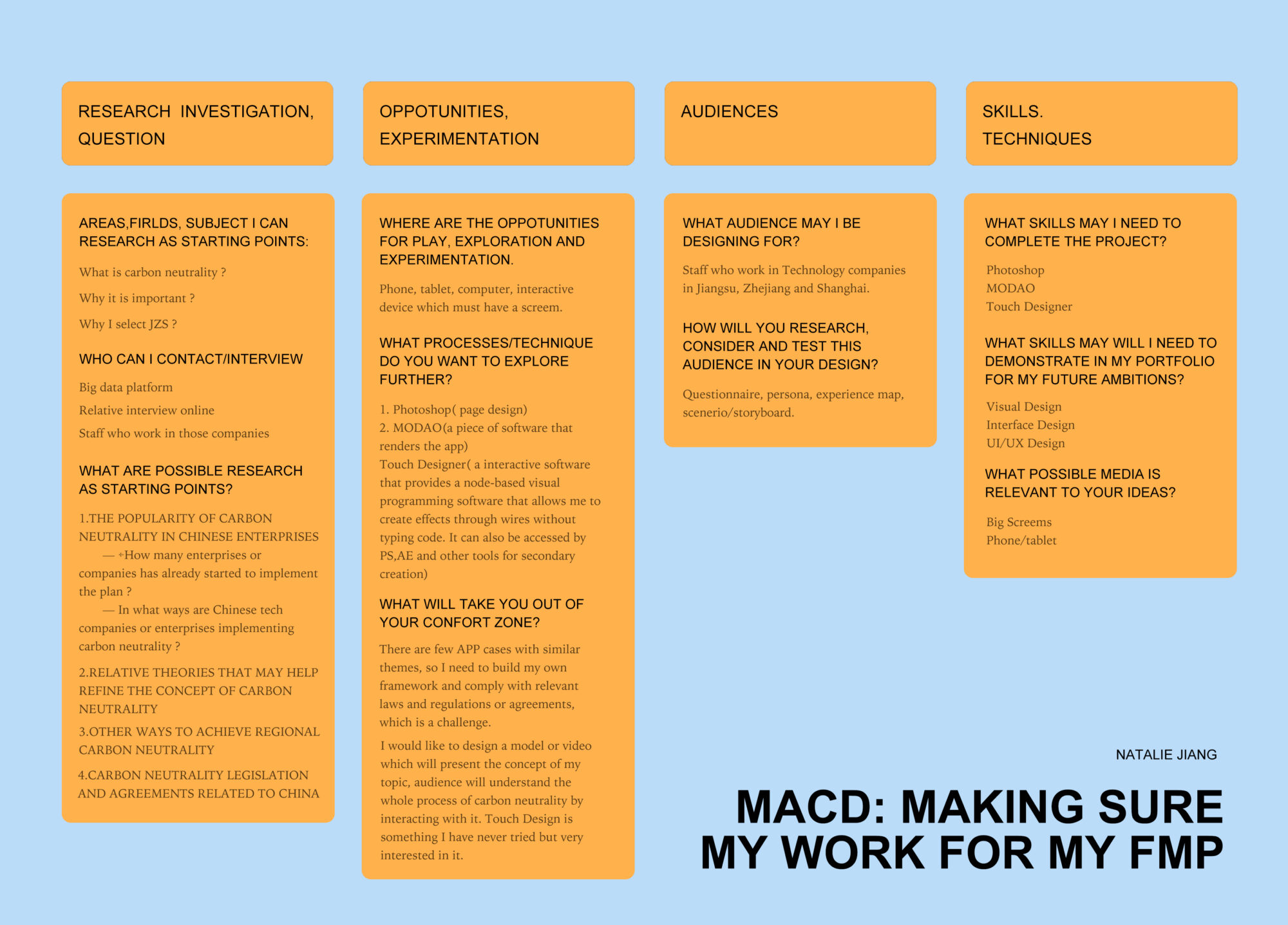
Part 1: Research
Q1: What is carbon neutrality?
Carbon neutrality means having a balance between emitting carbon and absorbing carbon from the atmosphere in carbon sinks. Removing carbon oxide from the atmosphere and then storing it is known as carbon sequestration. In order to achieve net zero emissions, all worldwide greenhouse gas (GHG) emissions will have to be counterbalanced by carbon sequestration.
Carbon sink is any system that absorbs more carbon than it emits. The main natural carbon sinks are soil, forests and oceans. According to estimates. Annual global CO2 emissions reached 38.0 Gt in 2019.
To date, no artificial carbon sinks are able to remove carbon from the atmosphere on the necessary scale to fight global warming.
The carbon stored in natural sinks such as forests is released into the atmosphere through forest fires, changes in land use or logging. This is why it is essential to reduce carbon emissions in order to reach climate neutrality.
- Carbon Footprint
A brief history of footpointing.
Q2: Why this topic is important in China?
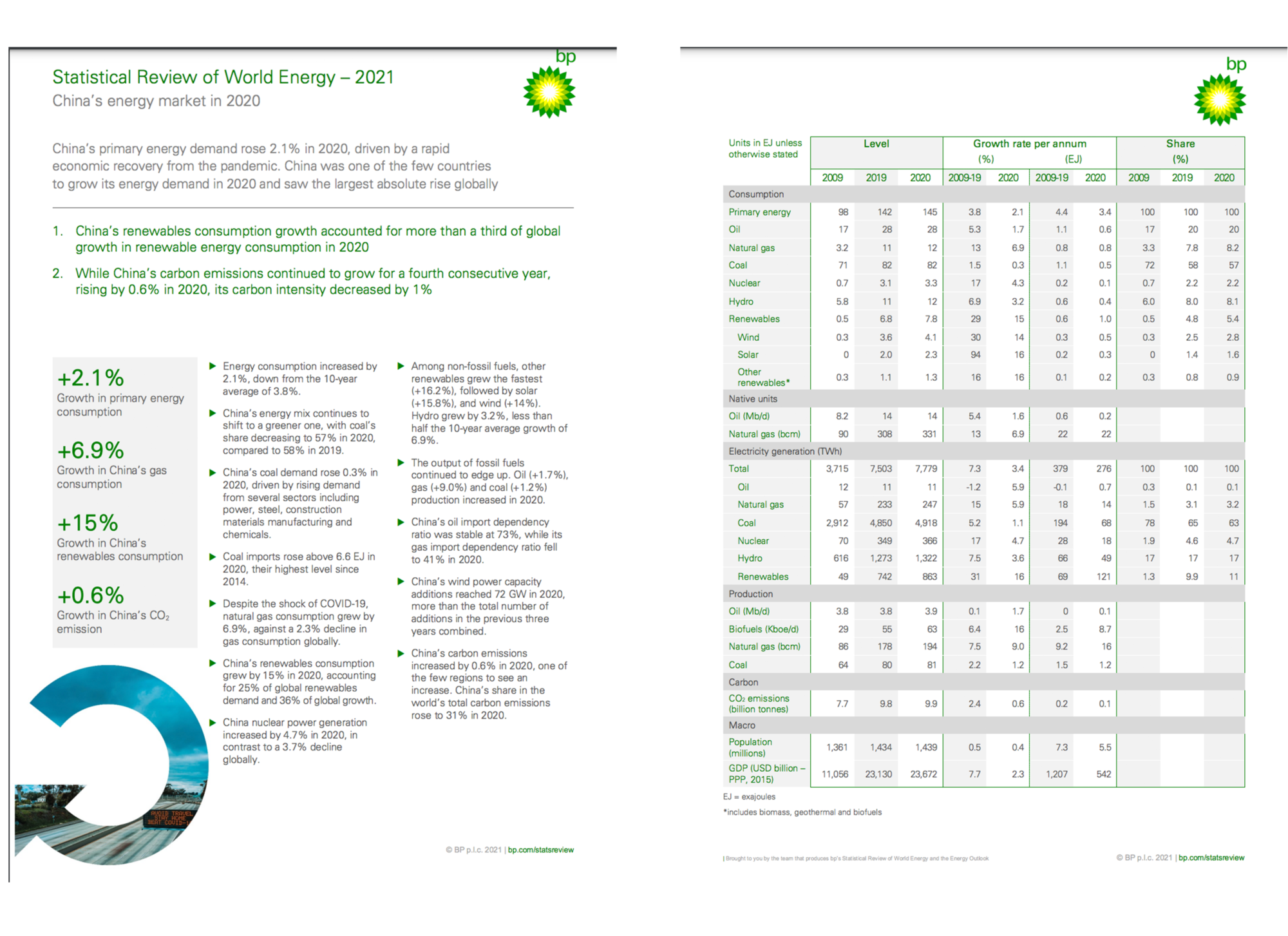
Carbon neutrality in China
As the world’s largest greenhouse-gas emitter, China will make or break the global quest for climate neutrality by the middle of the century – the only way to limit the global average temperature increase to 15 degree. Consequently, President Xi’s announcement in September 2020 of China’s new objective to peak CO2 emissions before 2030 and achieve carbon neutrality by 2060 was broadly welcomed. But President Xi offered no detail on how China could turn this vision into reality, and an examination of China’s current plans shows clearly the goal will not be achieved without major changes.
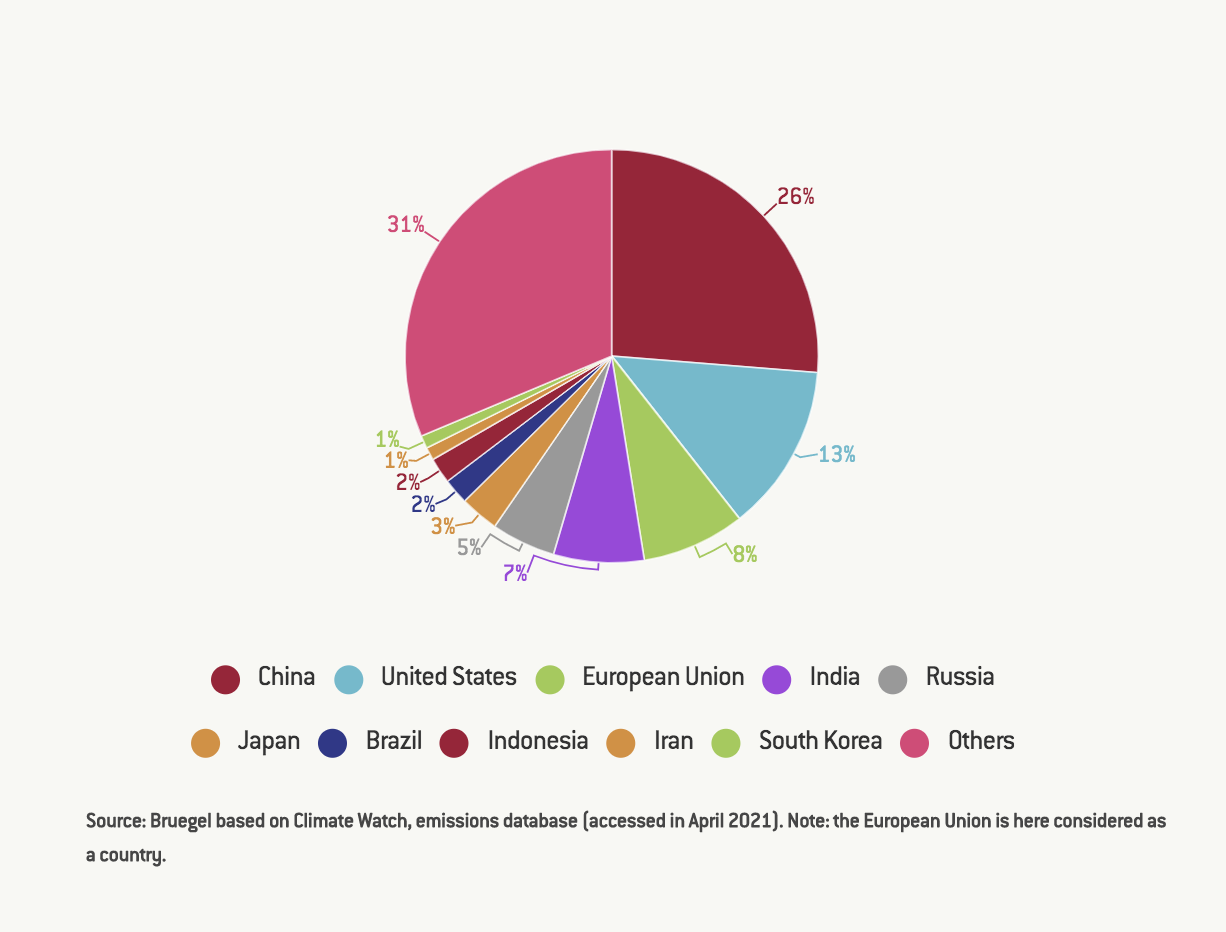
China’s emissions are likely to increase by around 500 Mt CO2. With energy demand and emissions already growing in 2020, in 2021 CO2 emissions in China should be 6%, or almost 600 Mt CO2, above 2019 levels. All fossil fuels should contribute to higher CO2 emissions in China in 2021, but coal is expected to dominate, contributing 70% to the increase, predominantly due to greater coal use in the power sector. Despite China’s rapid growth in generation from renewables, output from coal-fired power plants has increased by 330 TWh, or nearly 7%, between 2019 and 2021.
—— Information came from International Energy Agency (IEA)
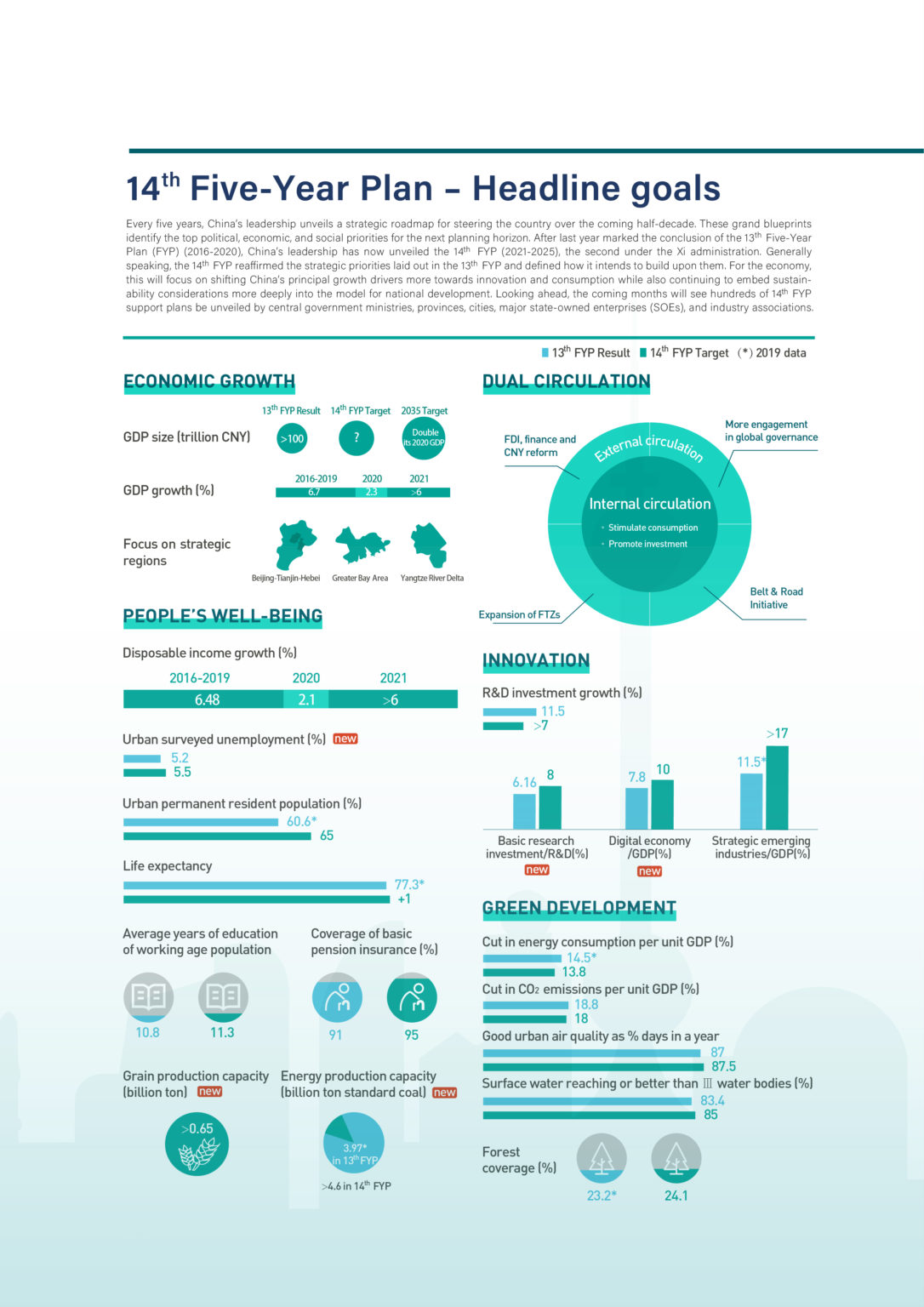
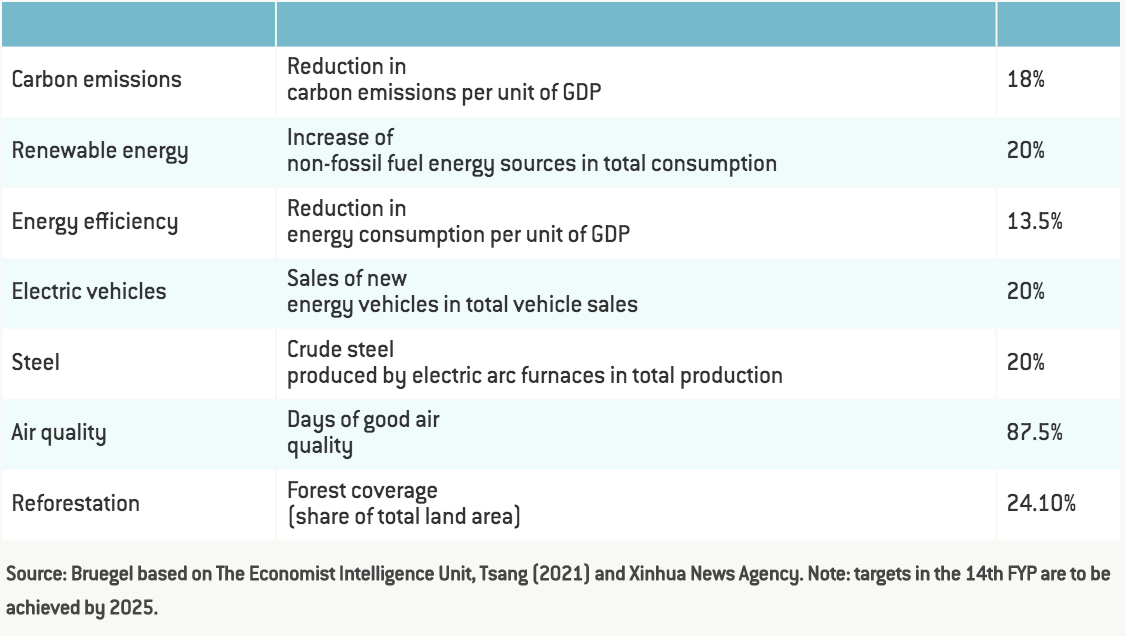
China’s 14th Five Year Plan announced at the National People’s Congress in March 2021. Five Year Plans are the main guiding force behind policy in China at all levels of government. On climate measures, the 14th FYP falls short. It essentially outlines a continuation of existing trends, rather than an acceleration of climate action. Strongly focused on the development of the manufacturing sector (notably through strict targets on state-led innovation), the plan mentions neither a coal cap, nor an emissions cap.
—— Analysis by Alicia Garcia-Herrero and Simon Tagliapietra in BRUEGEL
Bruegel: The European think tank that specialises in economics.Explore some of the hot topics in economic policy including climate change, energy, ECB, Health Economics and Policy and Trade Policy.
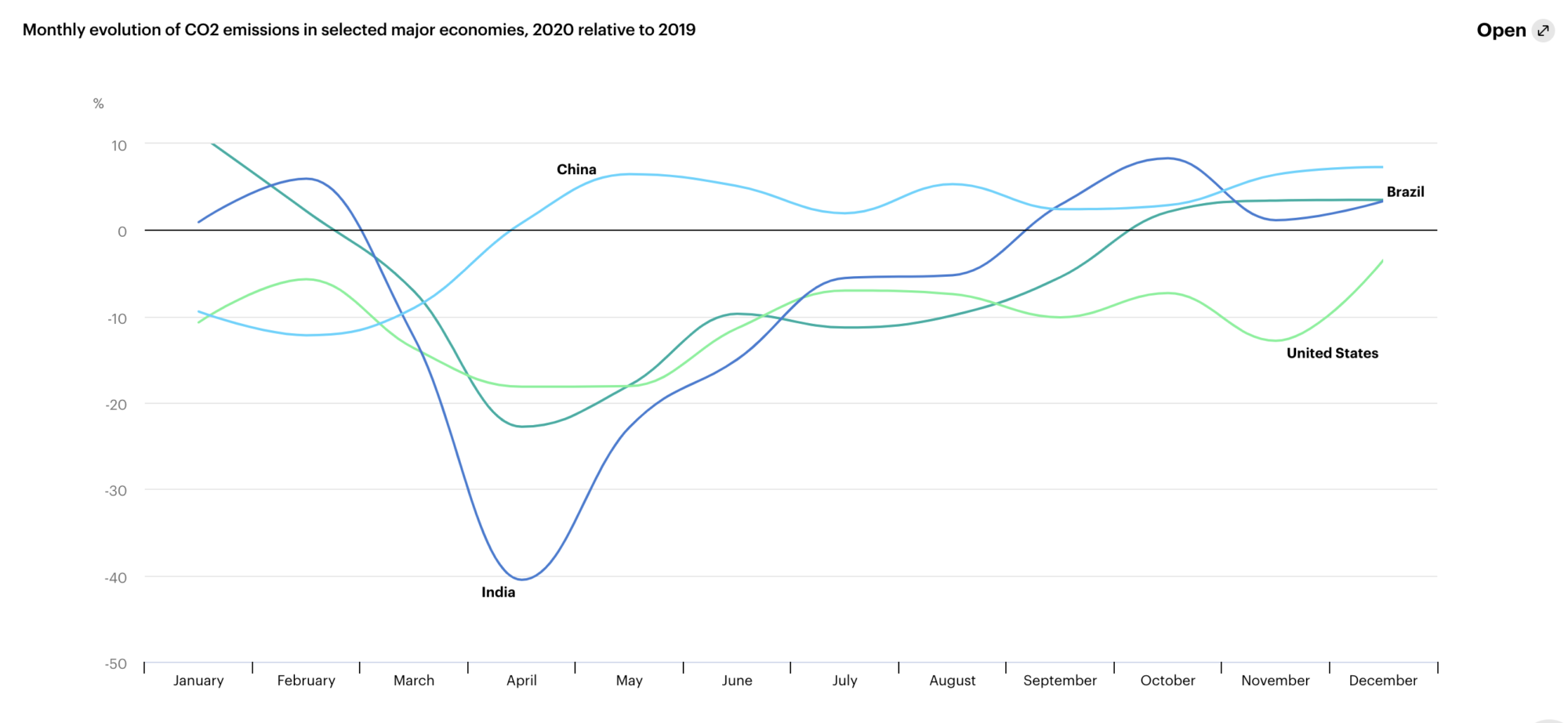

In China, the world’s largest CO2 emitter and the first country to be impacted by the Covid-19 pandemic, CO2 emissions dropped by 12% in February relative to the same month in 2019, as economic activity was curtailed. In April, China’s economic recovery lifted its monthly CO2 emissions above their 2019 level. For the remainder of the year, emissions in China were on average 5% higher than 2019 levels. The latest annual figures indicate that the country’s overall CO2 emissions in 2020 were 0.8% (or 75 Mt CO2) above the levels assessed at the end of 2019.
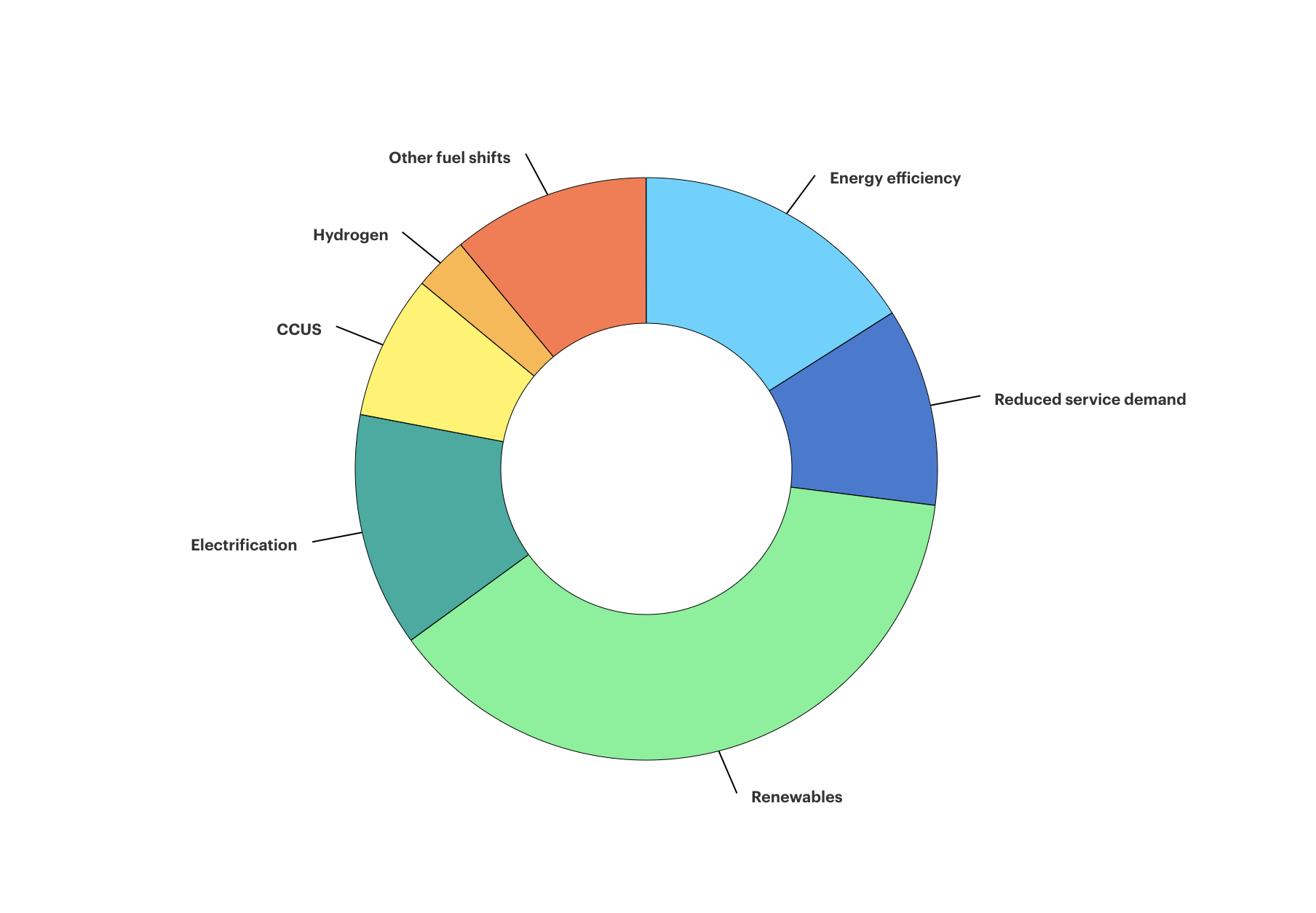
This is a chart showed in Climate Action Tracker: https://climateactiontracker.org/countries/china/

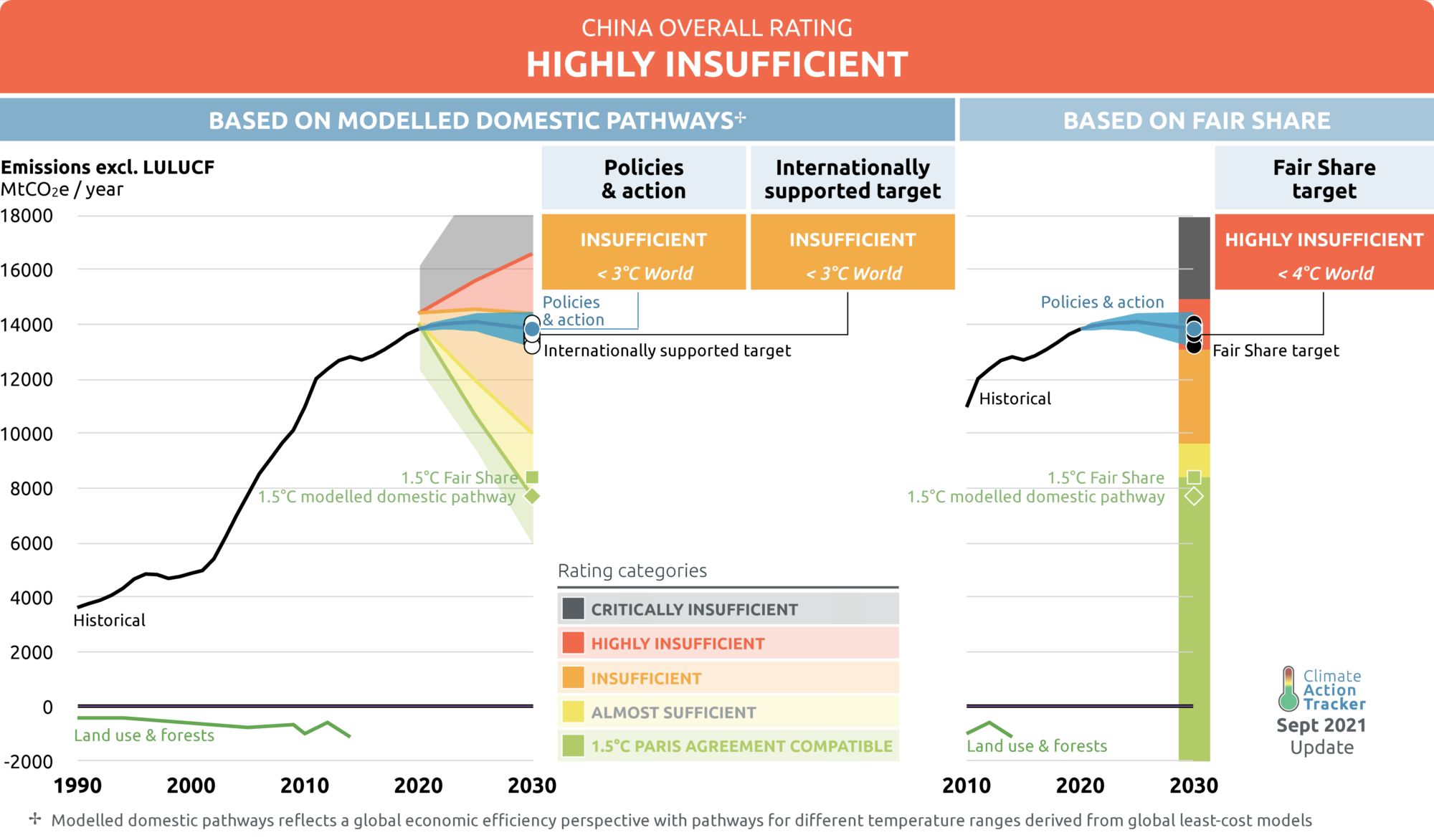
China’s climate policies and action rates better at “Insufficient”, as the upper bound of its emissions pathway in its current policy projections has decreased due to energy sector policy developments. However, the rating still indicates that national policies are consistent with domestic pathways associated with 3°C and could lead to rising, rather than falling, emissions.
To improve on its rating and become compatible with 2 °C (“almost sufficient”), China would need to peak emissions as early as possible and decrease coal and other fossil fuel consumption at a much faster rate than currently planned – and set clear phase-out timelines. China’s proposed NDC update is only a slight improvement from its first NDC and does not result in an improvement in the CAT’s rating, even if officially submitted; China needs to adopt more ambitious medium-term climate targets to match its long-term net-zero goal.
Q3: Are there any methods that are being proposed and implemented to develop carbon neutrality?
- Carbon offsetting
Another way to reduce emissions and to pursue carbon neutrality is to offset emissions made in one sector by reducing them somewhere else.
This can be done through investment in
- Renewable energy
Renewable energy, often referred to clean energy comes from natural sources or processes that are constantly replenished. For example, sunlight or wind keep shining and blowing, even if their availability depends on time and weather.
While renewable energy is often thought of as a new technology, harnessing nature’s power has been used for heating, transportation, lighting, and more. Wind has powered boats to sail the seas and windmills to grind grain. The sun has provided warmth during the day and helped kindle fires to last into the evening. But over the past 500 years or so, humans increasingly turned to cheaper, dirtier energy sources such as coal and fracked gas.
Solar or photovoltaic/ wind energy/ hydroelectric power/ biomass energy/ geothermal energy/ ocean
- Energy efficiency
other clean, low-carbon technologies. The EU’s emissions trading system (ETS) is an example of a carbon offsetting system.
Another example of an initiative to reduce emissions is the carbon border adjustment mechanism, which would apply carbon prices on imported goods from less climate ambitious countries. This should help discourage companies moving production from the EU to somewhere with less stringent greenhouse gas emissions rules. The Commission should propose this carbon levy in 2021.
2. Mitigation
- Reduce energy consumption
- improving energy efficiency in process
- innovation in low-carbon technology
Q4: Why do I regard technology companies as my target user?
From the perspective of concrete means of implementation, enterprises can participate in not only energy saving and emission reduction in the production link, but also in the long-term mechanism and technology investment. For example, the Internet of Things technology is being applied to power enterprises in Beijing, Zhejiang and Xinjiang to form precise control of carbon emissions. In the future, tech companies are also expected to participate in these explorations, such as Tencent’s “strategic upgrade” mentioned in its latest earnings report, with carbon-neutral technology and funding as an important direction.
Besides, In the process of carbon neutrality, employees will gradually get familiar with and abide by it, which can greatly promote the dissemination and learning of carbon neutrality among people.
Q5: Why do I choose JSZ(Jiangsu, Shanghai, Zhejiang) ?
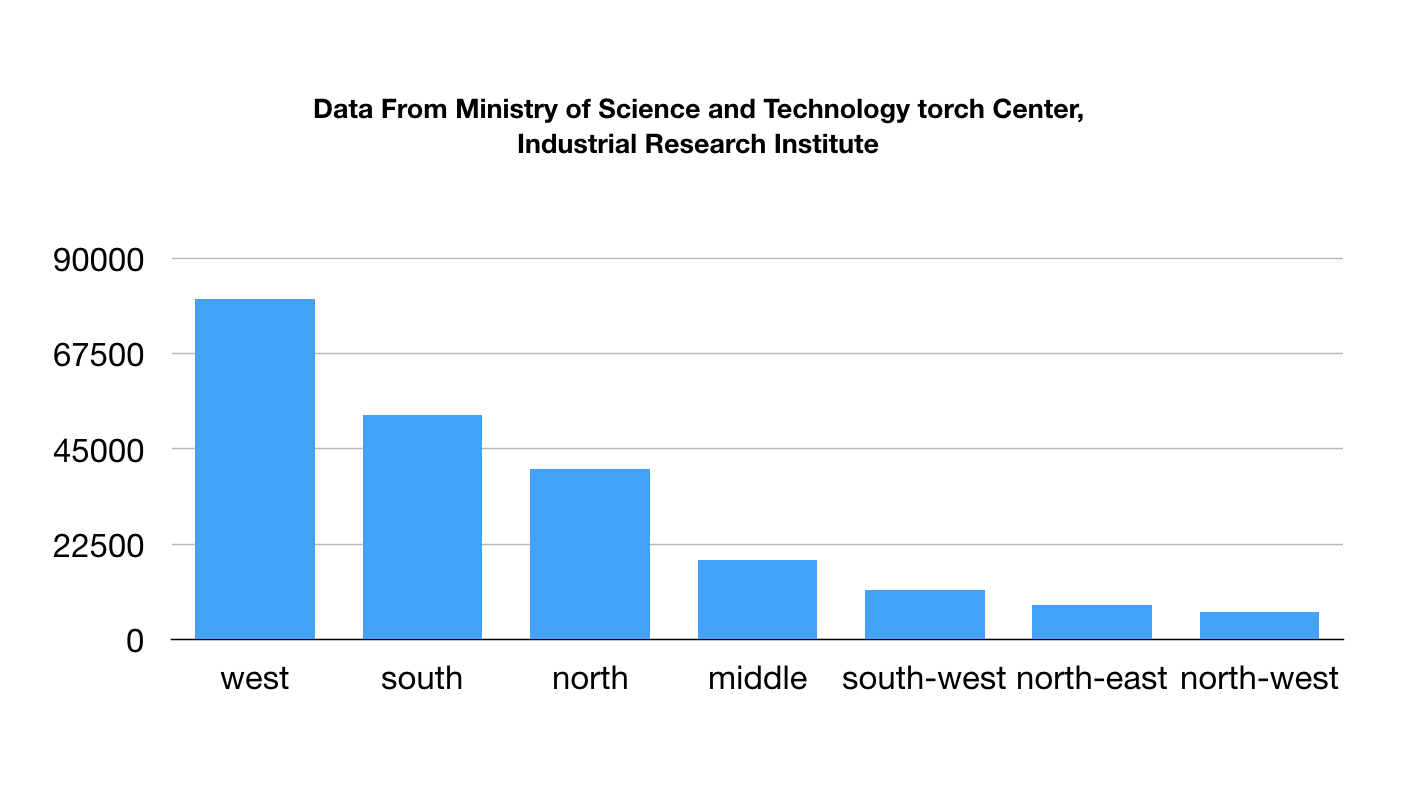
In terms of regional distribution, the number of high-tech enterprises in East China was far ahead, reaching 80,400 in 2019. It was followed by South China and North China, with 52,900 and 40,200 enterprises respectively. The scale of development of high-tech enterprises in each region is closely related to local economic development and industrial structure.
Shanghai, London and New York —— Three areas that are about to be threatened.
—— BBC News
Global warming and melting glaciers and polar ice sheets are raising sea levels worldwide, leaving tens of millions of people in coastal areas and on low-lying islands vulnerable to flooding and other weather-related catastrophes.
London, New York and Shanghai could all be threatened in the future as sea levels around the world rise much faster than expected due to accelerated melting in Greenland and Antarctica, according to new research.Estimates of the scale and timing vary, but Stefan Rahmstorf, a respected expert at Germany’s Potsdam Institute, expects a 1-meter (3-foot) rise in this century and up to 5 meters (15 feet) over the next 300 years.
Chinese cities are among the largest and most threatened. Their huge populations — the Yangtze River Delta region alone has about 80 million people — and their rapid growth into giant industrial, financial and shipping centers could mean massive losses from rising sea levels, experts say.
Q6: What should be considered in carbon neutrality in a company?
In order to understand the whole process of how to realize carbon neutrality in a company, I decide to use a existing method, which is released by certified carbon neutral, a badge demonstrates the climate action of successful companies around the world. It’s carried by businesses, products and events that have achieved carbon neutrality in line with The CarbonNeutral Protocol

What is CarbonNeutral product certification?
https://carbonneutral.com/pdfs/CarbonNeutral_product_white_paper_Mar_2021.pdf
Method:
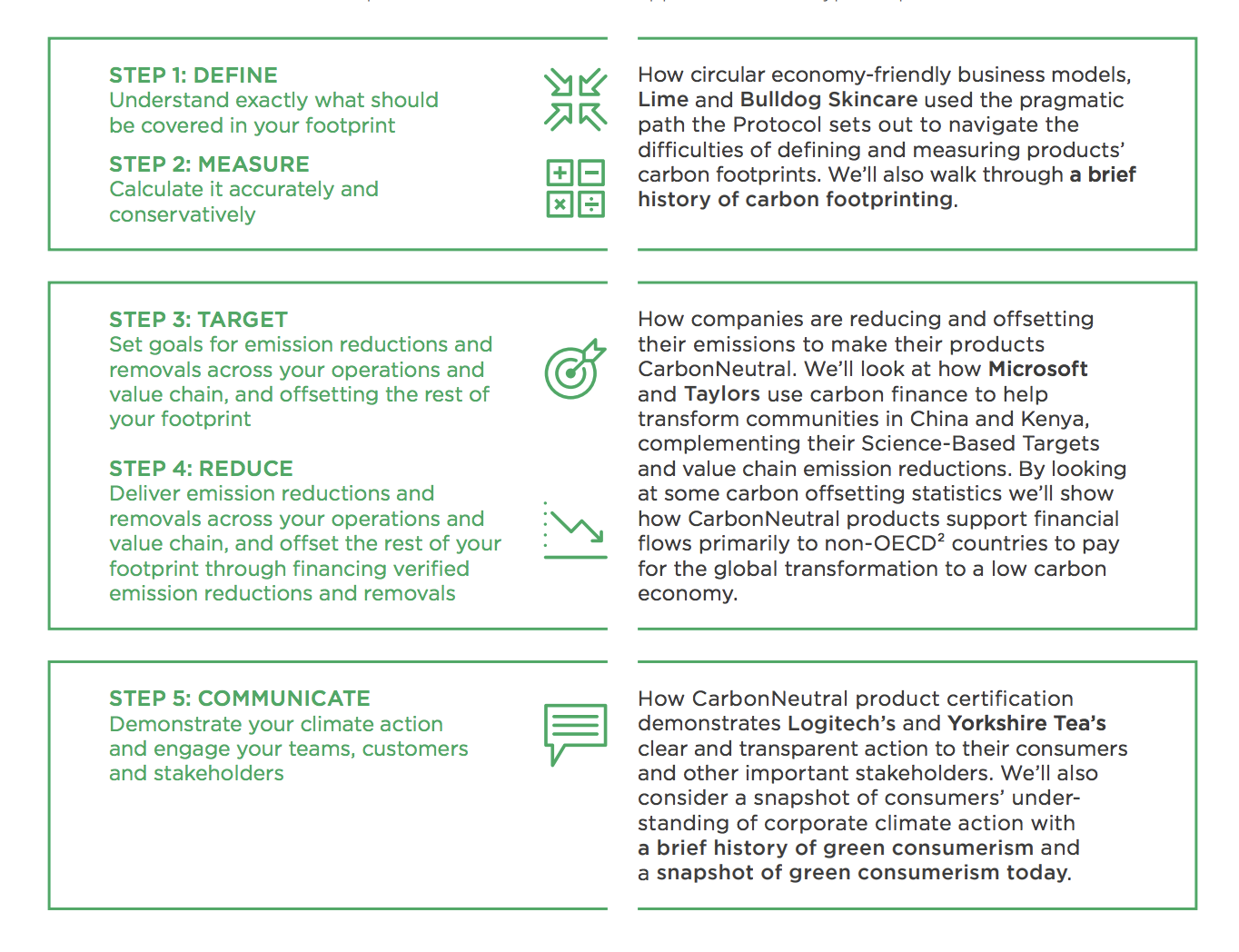
Step 1: Define
Company certification includes the emissions from owned or leased or directly controlled vehicles or equipment that use fossil fuels; emissions from the generation of purchased electricity, heat, and cooling; and emissions from waste and business travel.
Other entity certifications are available, such as Organisation and Data Centre.
- Make your product CarbonNeutral: A product certification means when communicating to your customers you can talk about the life-cycle of the product being carbon neutral. To achieve this you will very likely need data on the materials and services that go into the product, its manufacture and its distribution to your customers when measuring emissions.
- Make a specific business activity CarbonNeutral: Business Travel certification includes emissions arising from air, public transport, rented / leased / owned vehicles and taxis, as well as emissions from hotel accommodation due to business travel.
Event certification includes all on-site emissions and electricity, travel by organisers and contractors and waste. Participant travel emissions are also recommended.
Step 2:
Contracting with independent emissions assessment providers that are experts in businesses of your type, size and location. They can identify what data needs collecting, support you in collecting data from the business, and then calculate your total emissions.
The CarbonNeutral Protocol clearly identifies the data required for each type of carbon neutral action and all our assessment partners are highly experienced in measuring footprints to comply with the requirements of the Protocol.
- The Third Party Assessment
If required, we can contract with independent third-party emissions assessment providers that are experts in businesses of your type, size and location. These include Anthesis, Ecometrica, Quantis and RSK.

- What data you will need?
Each certification requires different emissions to be calculated.
The data needed includes things like fuel consumption on site and for company-owned vehicles, purchased energy, waste and business travel.
The assessment partner will explain the full set of data that should be included, and what should be excluded. Where data isn’t available they will also work with you to produce conservative estimates and assumptions.
- The process
We will work with you to select the best assessment partner based on your location, number of employees, the level of support needed, and any other considerations.
A kick-off call will begin the process by reviewing the scope of the assessment, what data is needed, agreeing the timeline and answering any questions.
Once your data has been gathered the assessment partner will calculate the footprint and provide you with a Greenhouse Gas Assessment Report, which underpins your CarbonNeutral® certification.
Step 3: Target
- setting a target
To receive CarbonNeutral certification a business commits to net zero greenhouse gas emissions for the certification period.
- Giving clarity to stakeholders
Setting a target for achieving carbon neutrality immediately enables a business to make a statement of climate action that has absolute clarity with a 100% reduction.
- Carbon neutral companies are able to build reputation for immediate positive impact and align with the increasing calls for carbon neutrality that is required to keep global temperature rise below 2 degrees.
- Carbon neutrality sets an immediate price on carbon internally to drive operational changes and efficiencies.
- Carbon neutral companies create a foundation on which other targets can build, such as meeting a 100% renewable energy target.
Step 4: Reduce
You deliver internal emissions reductions – such as energy-efficiency programmes and changes to business travel.
- The CarbonNeutral Protocol and internal reductions
Internal changes can deliver cost-effective carbon emission reductions, reducing energy and waste bills along with business travel costs. Carbon neutrality puts a price of carbon into the business to incentivise this type of shift.
- Possible Internal Reductions
The best measures to deliver internal reductions will be very different for each company but typically the focus of our clients is on three areas: energy use, waste and travel.
The footprint report will highlight where the most significant emissions hot spots are for your business. Internal reductions can range from the relatively simple, such as changing to energy saving light bulbs, to those which may require a greater degree of behaviour change, such as reducing travel and using technology for meetings, to significant structural investment such as updating buildings or manufacturing processes.
- Renewable energy
Step 5: Communication
Supporting you to deliver a clear and credible message about each stage of your climate action to your stakeholders, providing tips, tools, copy, images, a certification logo and case studies of best practice communications.
EXAMPLES OF CARBON NEUTRELITY
EX1:
Measuring the journey of an electric scooter from manufacture to end of use
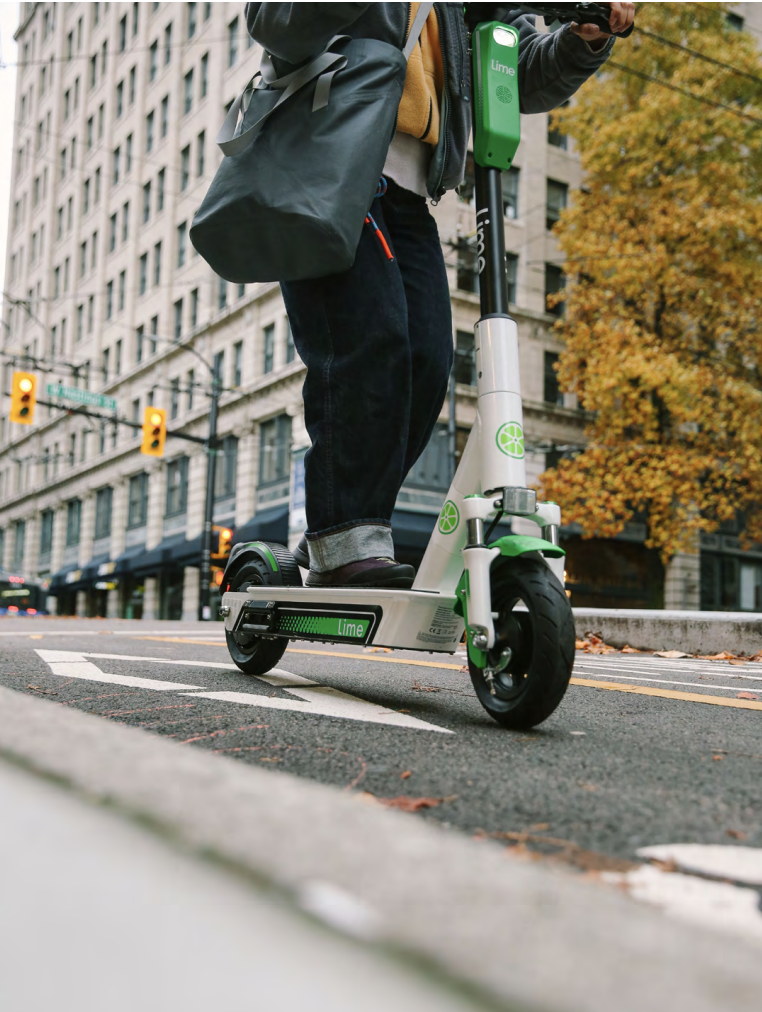
Lime offers a platform for shared mobility in over 100 cities around the world. Its dock-less standup electric scooters and e-bikes are located and unlocked via its app, and have been ridden on more than 200 million trips since the company’s founding.
To make its Paris e-scooters CarbonNeutral, Lime looked at the emissions from “cradle to grave”, including the manufacture, distribution, maintenance, charging, and their end-of-life. Lime worked with third-party carbon footprinting expert Anthesis to conduct a life-cycle assessment of the environmental footprint of the e-scooters. The approach taken was to calculate the emissions for one passenger kilometre of riding, which then allowed total impact to be scaled based on total utilisation.
The manufacture of the scooter parts and the transport needed to charge the scooters were found to make up the biggest part of the greenhouse gas footprint.
As part of its contribution to the circular economy, Lime’s high repair and reuse practices as well as recycling rates of metals and other materials from the e-scooter parts, are helping reduce its footprint (what is the reason). Further, the company’s long-standing practice of buying French renewable energy from Planète OUI to power its warehouse and scooters as well as converting to electric operations vehicles to manage its fleet, also served to reduce the carbon impacts of the e-mobility service.(What else can we do if we cannot reduce the CO2 released by the process?)
Paris Mayor Anne Hidalgo’s administration, global leaders in climate and transportation policy, ran a tendering process to decide which scooter companies could operate in the city as part of the effort to build a “15 Minute City” (energy conservation activities organized by the government, bidding standards be set for relevant enterprises to integrate energy conservation into the business model) where all journeys can be taken in 15 minutes. Lime was among the three winners of the highly competitive tender process, in part supported by its CarbonNeutral action as well as its rigorous assessment of its wider environmental impacts.
EX2:
Fast-growing UK male grooming company certifies its best-selling moisturiser product.
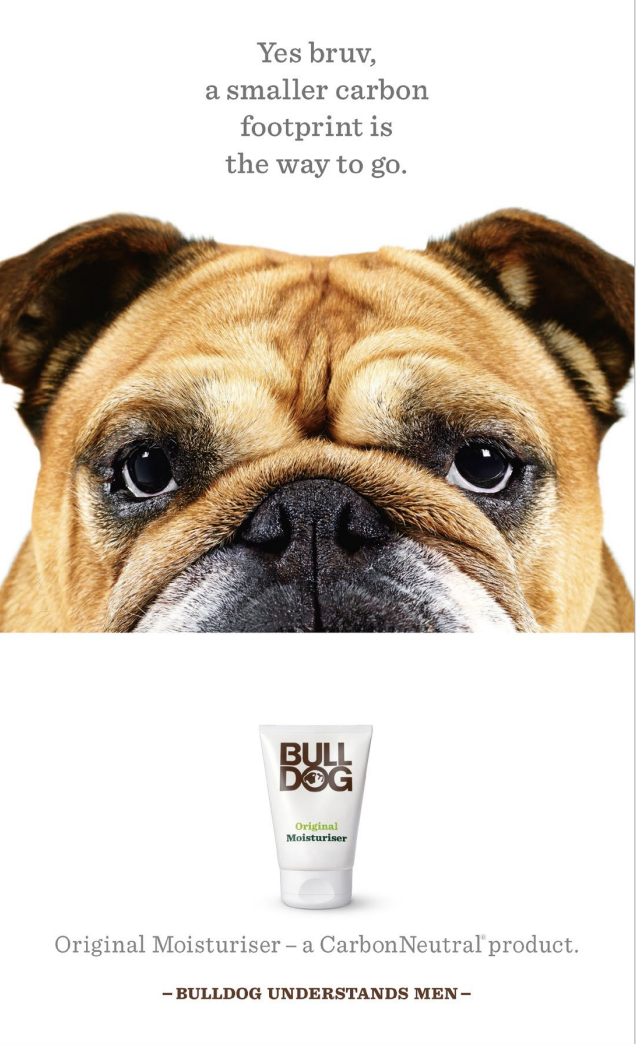
Bulldog uses natural ingredients to produce quality skincare, shaving and grooming personal care products for men. The company It has made all its UK moisturisers CarbonNeutral products, and its best seller–the Original Moisturiser–a CarbonNeutral product in: the UK, France and Germany.
To certify the products as CarbonNeutral, the company needed to measure the emissions
from the extraction and processing of materials and packaging, manufacturing, production and distribution.
Bulldog worked with an independent third-party specialist on the measurement of the carbon
footprint, collecting data on the indirect emissions from the production and transport of raw materials to the manufacturing centres, and direct emissions from on-site fossil fuels, purchased electricity and transportation to distribution centres.
The CarbonNeutral Protocol permits emissions factors to be used for measuring materials’ footprints where raw data isn’t available. Those emissions factors must be published by reputable and independent sources, up-to-date, and relevant to the subject’s location and activities. That enabled Bulldog to use emissions factors from the ecoinvent database, which has documented the footprint of over +4,000 materials and is referenced by the Greenhouse Gas Protocol.
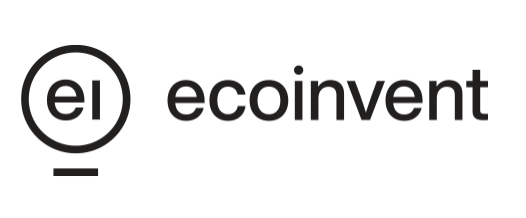
It uncovered how Bulldog’s work to source sugarcane-based bio-plastic for
its packaging—which based on research from a number of LCA assessments has a carbon intensity roughly 70 per cent lower than standard fossil fuel produced plastic—means that emissions per unit are 19 per cent less than if they had stuck with standard fossil fuel-based plastic. they also examined how emissions per bottle would increase by approximately 65 per cent if it switched to glass.
QUESTIONNAIRE
Based on my research, I design an interview and a questionnaire for people who currently work in technology enterprise. They work in different posts. In order to help them understand the goal of this stuff, I briefed them on the basics of carbon neutrality, and all the questions are structured around these basics. This action will last for a week, after which I will conduct statistics and analysis on all the data. This questionnaire was released on WenJuanXin, which is a popular questionnaire and data platform for 7 days.
Interview:
- Tell us your understanding of Carbon Neutral.
- What we should do to develop the Carbon Neutral?
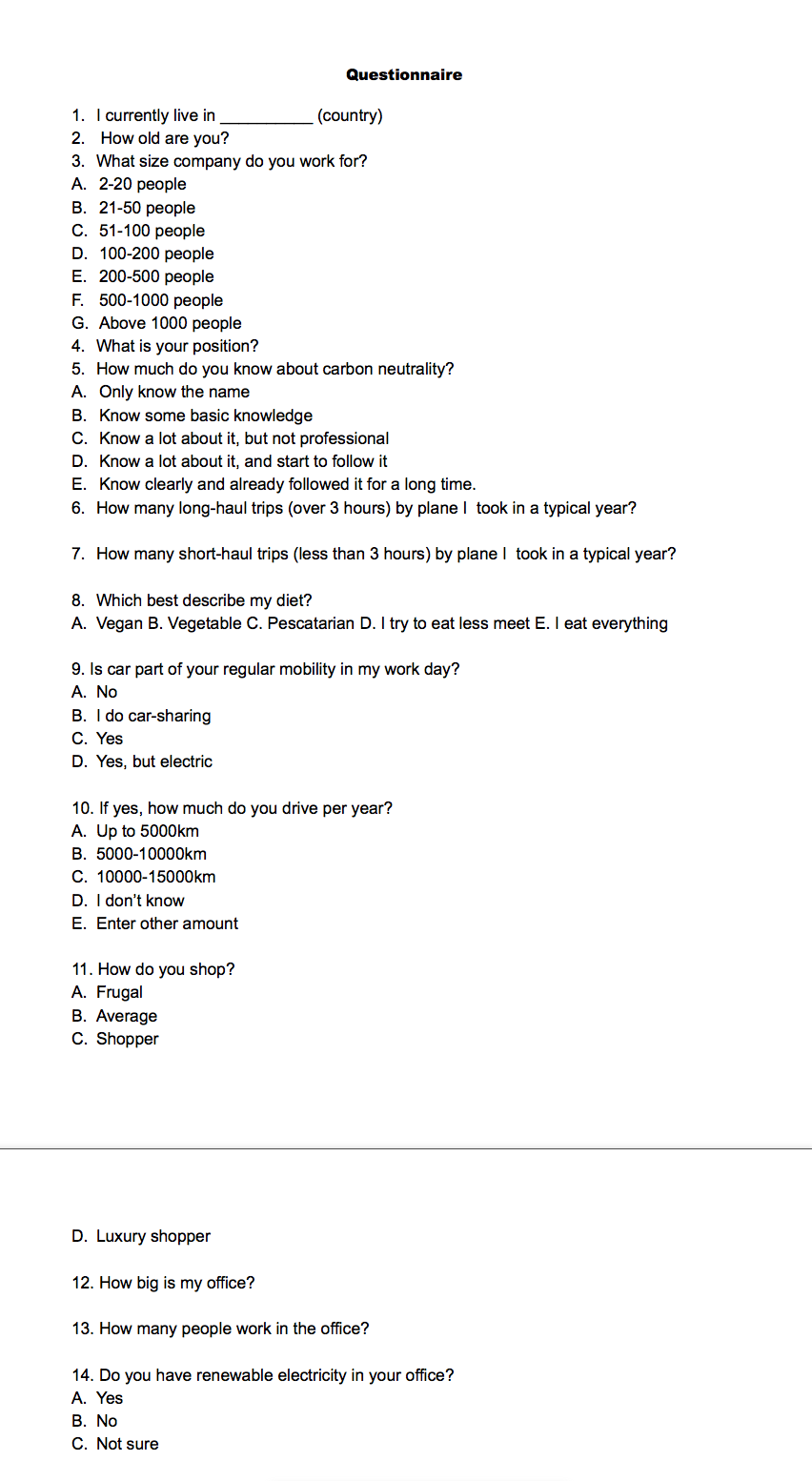
RESULTS
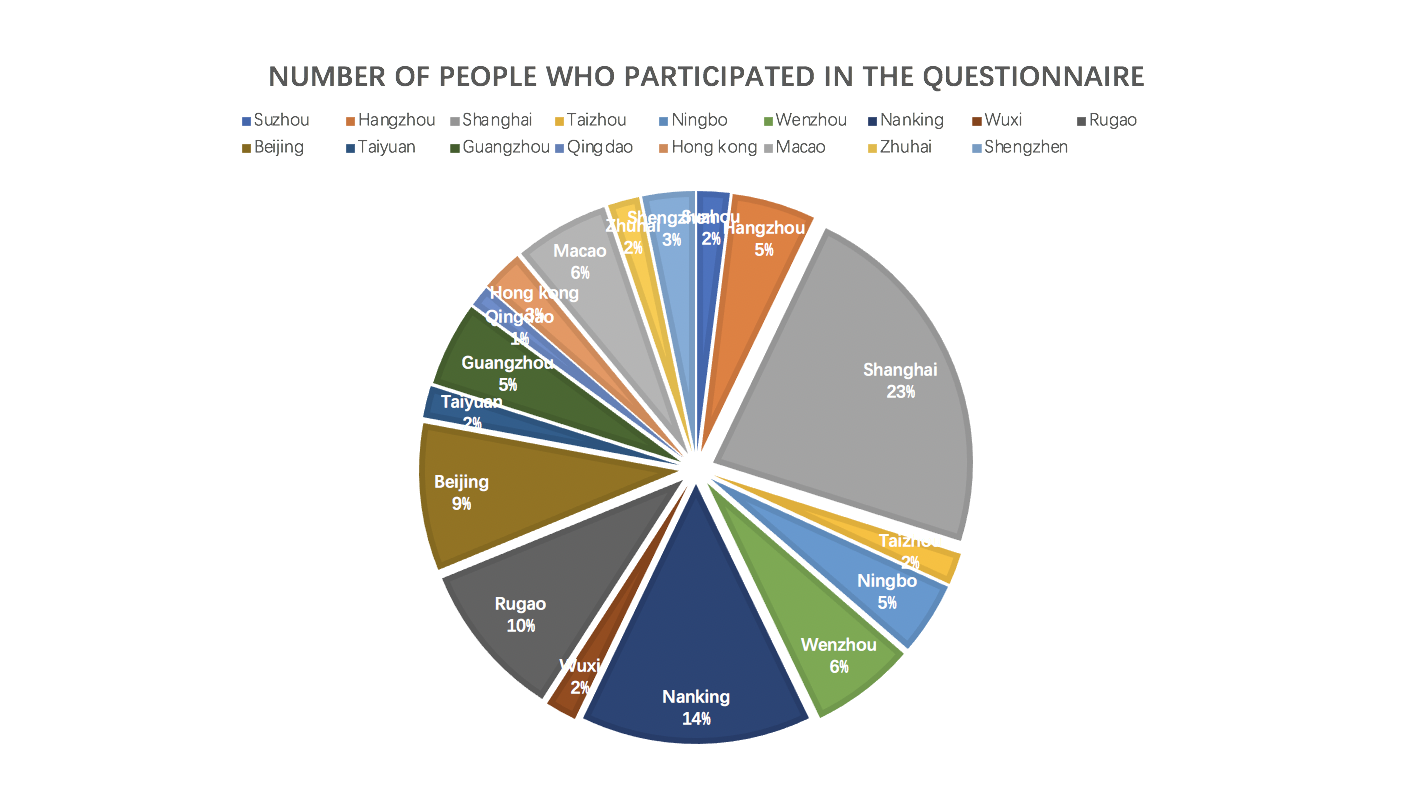
A total of 164 questionnaires have been collected and recorded in this survey, and the research objects are from science and technology companies all over China. According to the limitations of the subject, I will select Shanghai, Zhejiang province and Jiangsu Province as the main data recording objects. Therefore, the effective regional data of this research will be concentrated in Suzhou, Shanghai, Hangzhou, Taizhou, Ningbo, Wenzhou, Nanjing, Wuxi and Rugao which means the effective number of people will be 106.
After that, I start to collect specific data from those 106 people.
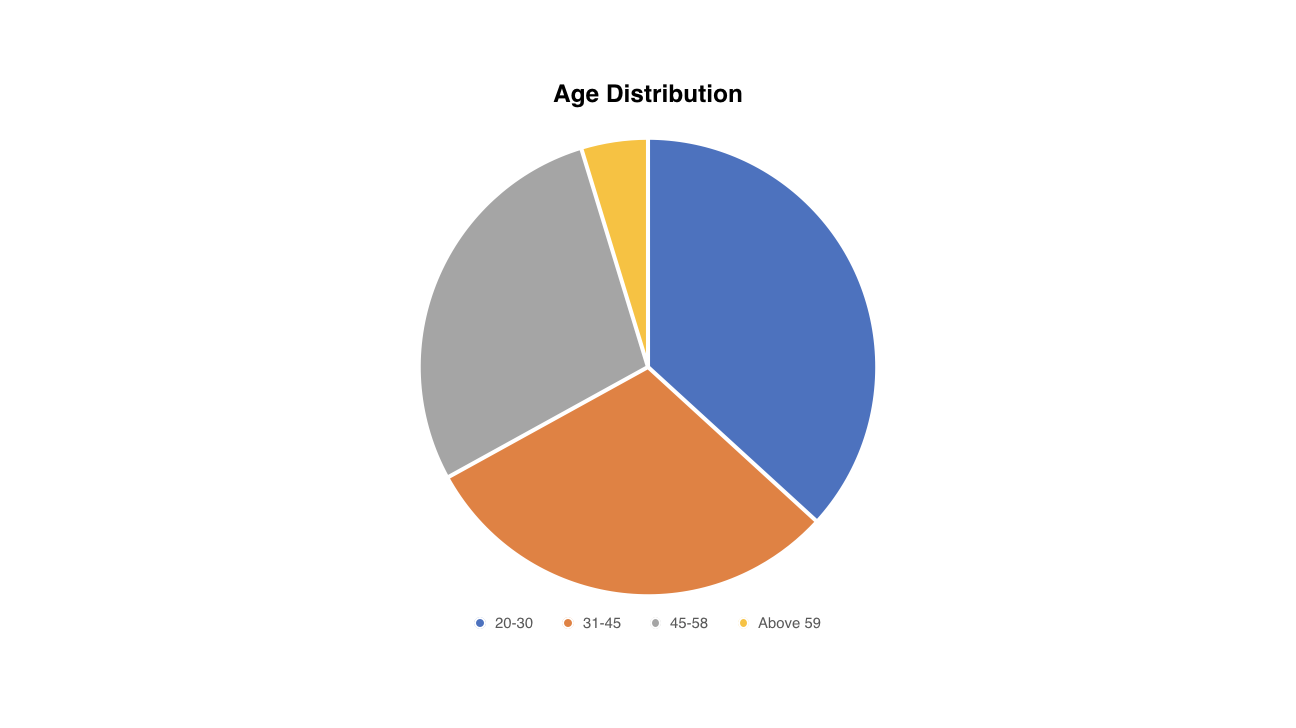
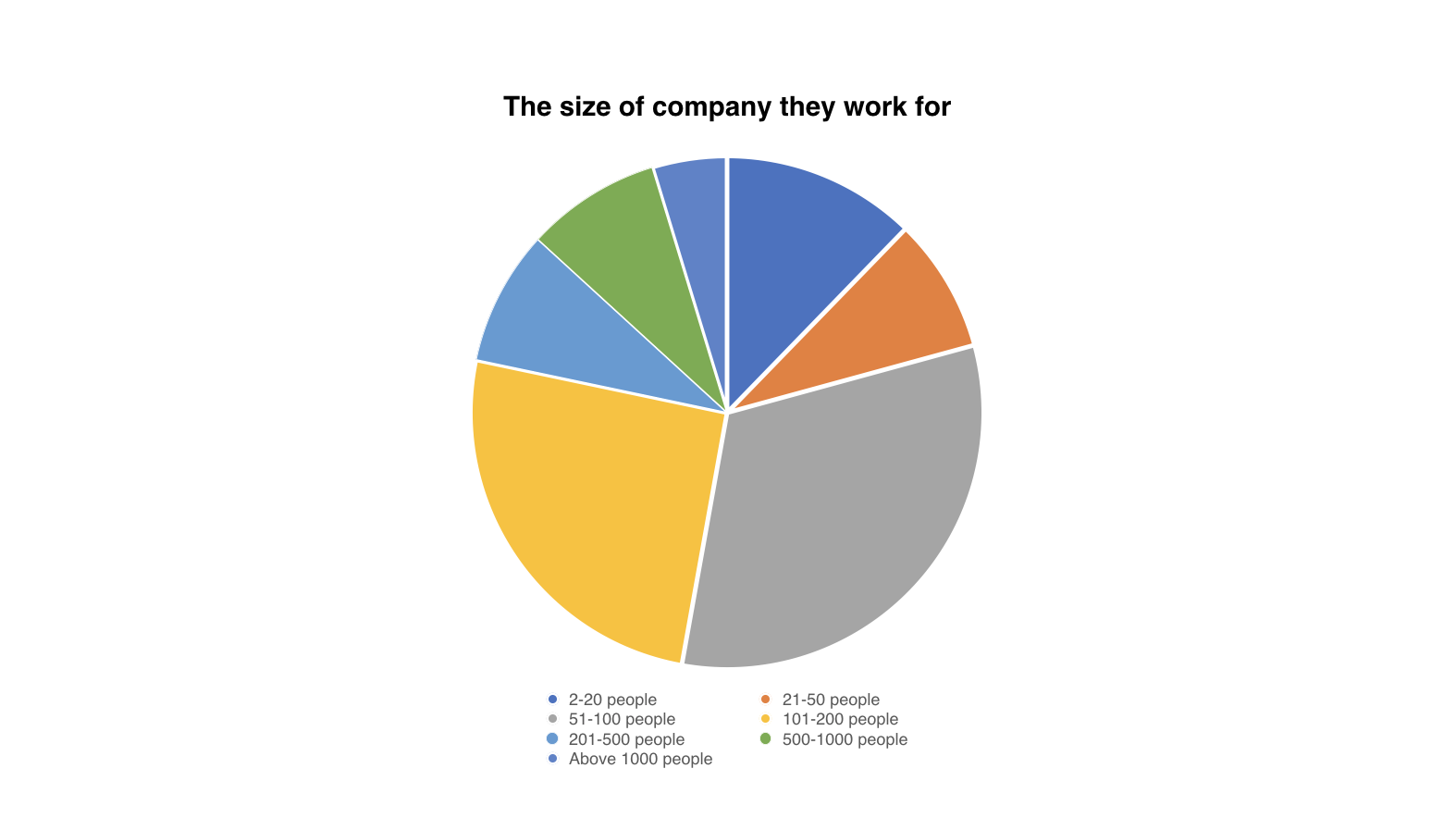
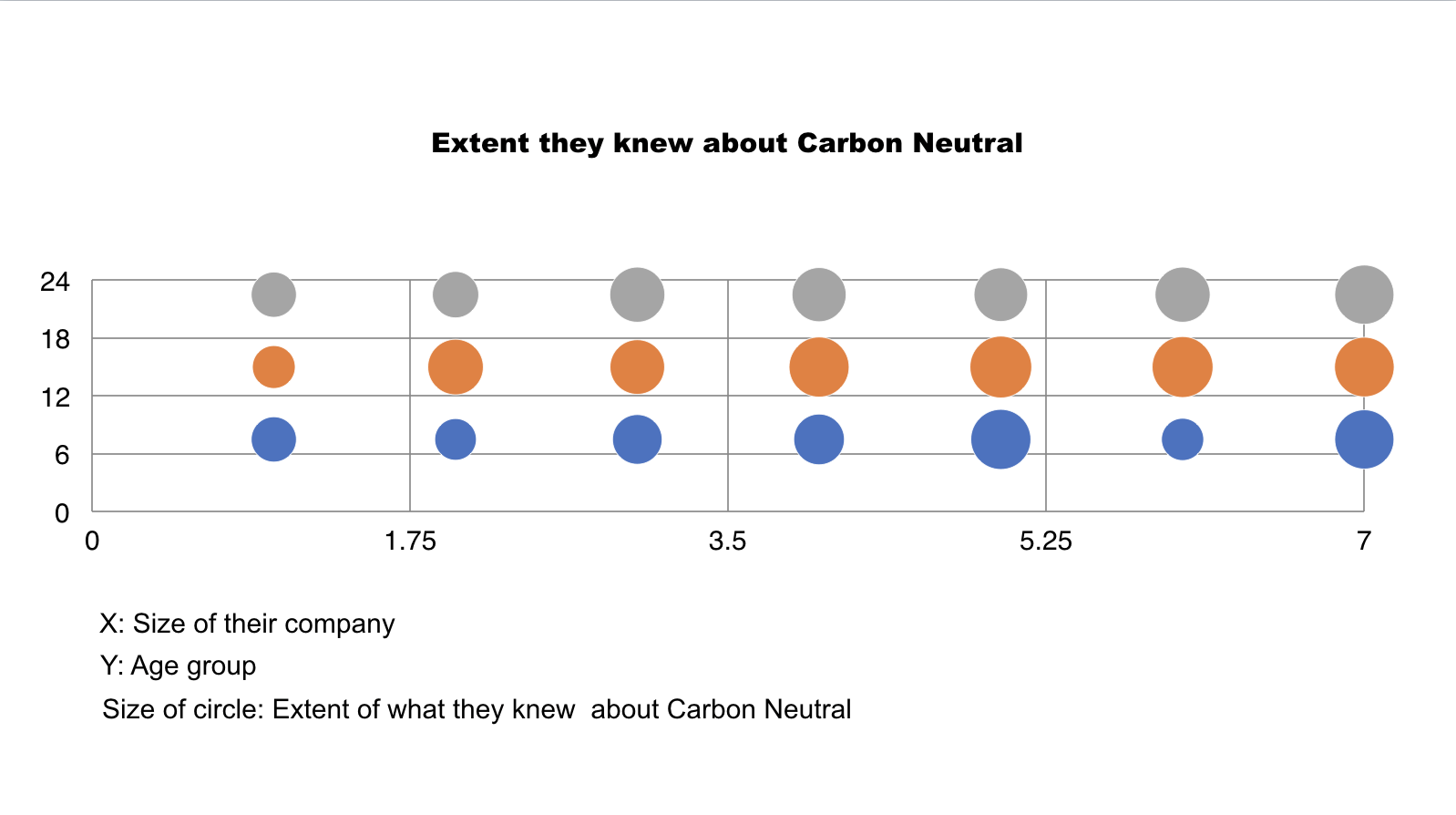

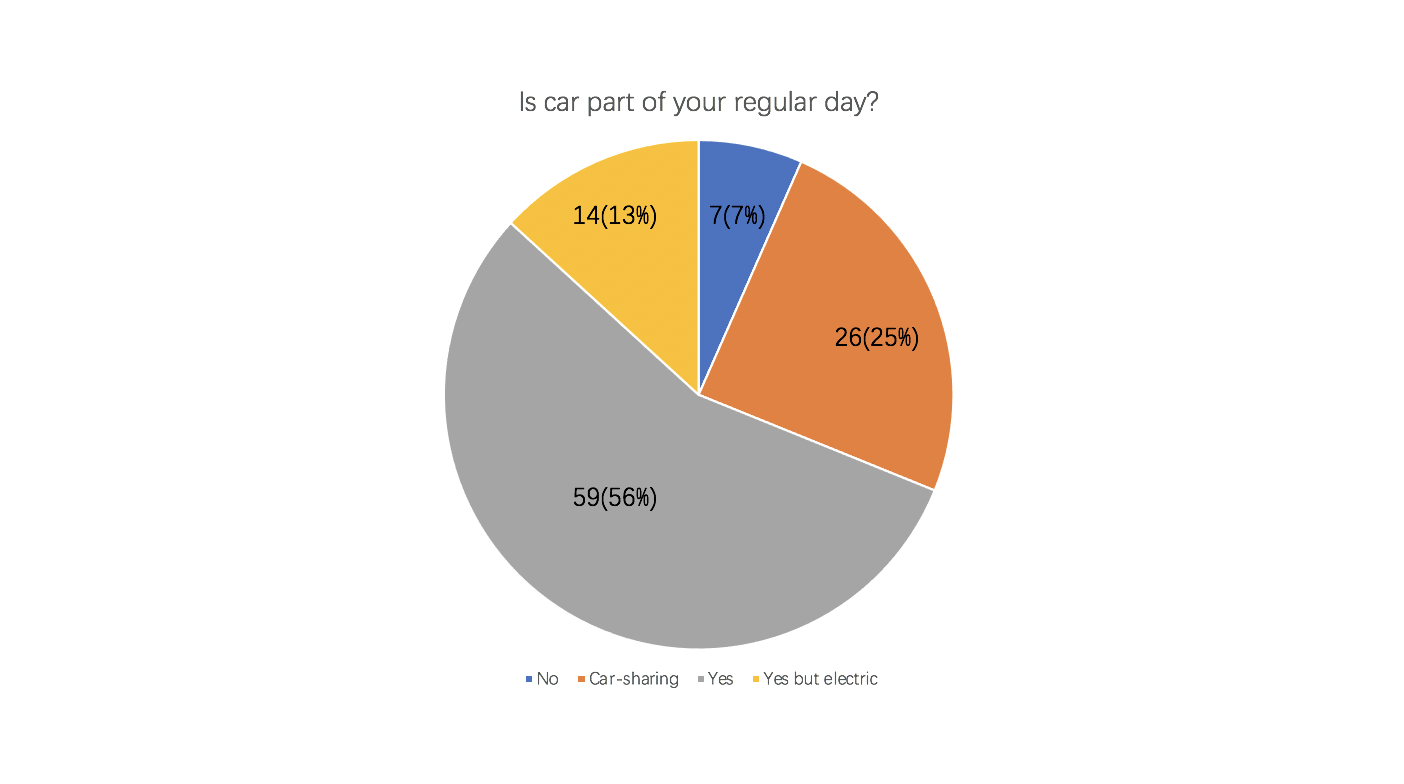
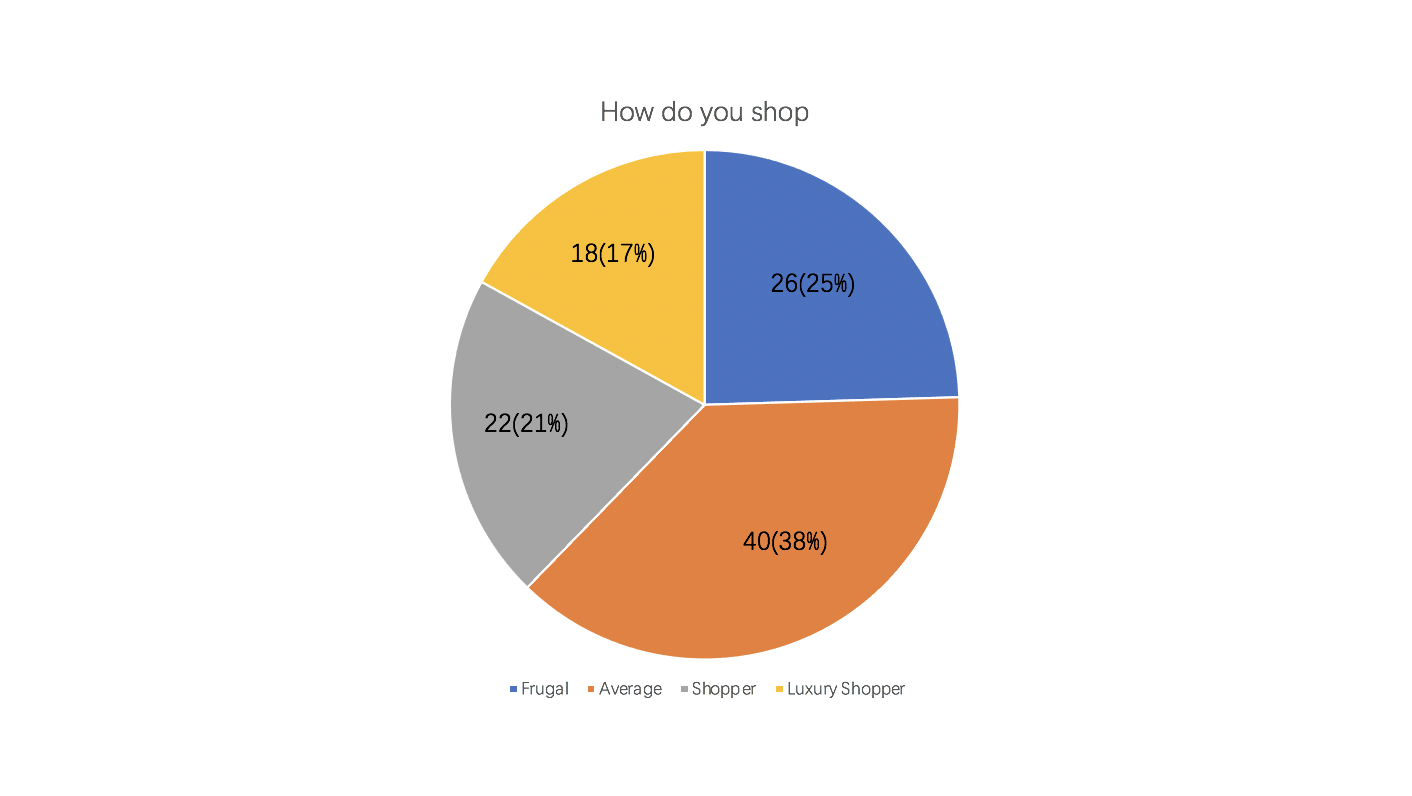
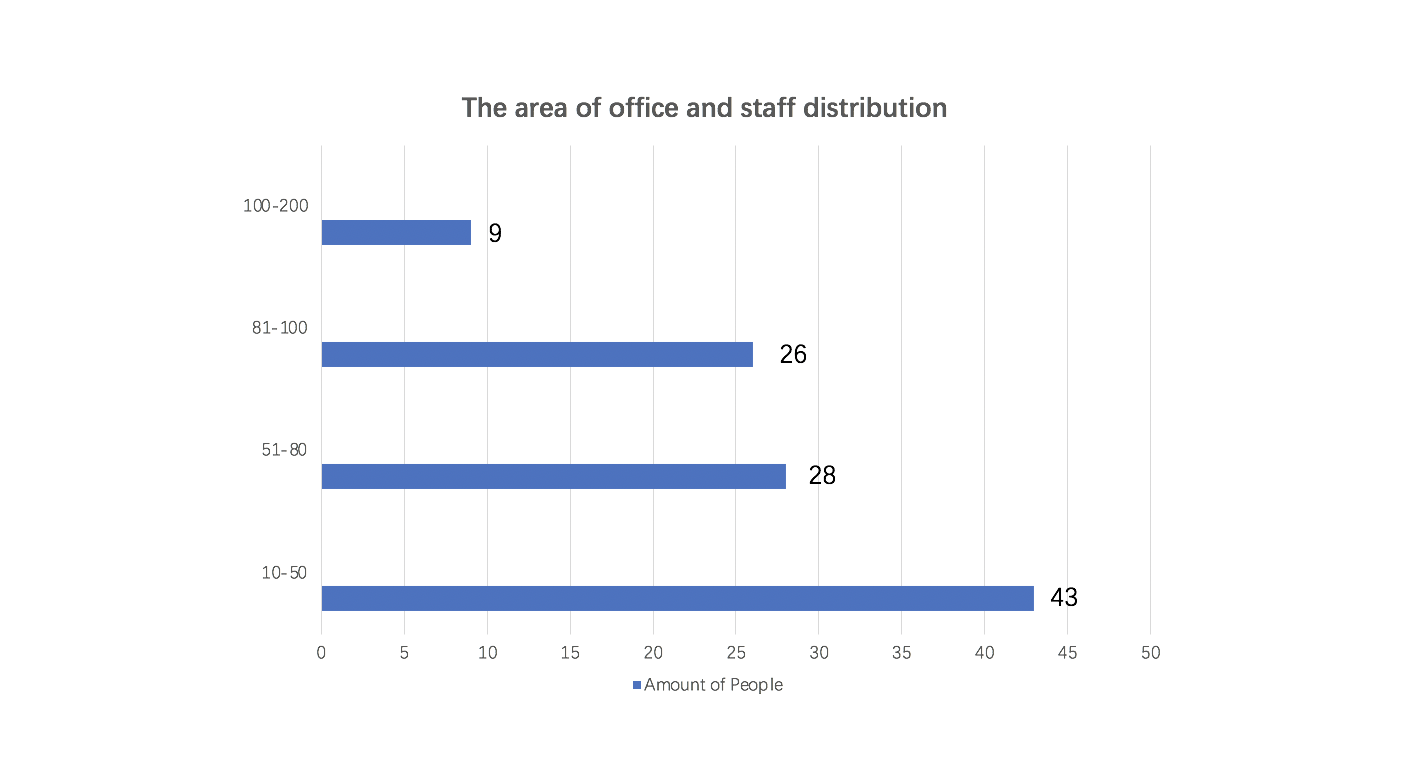
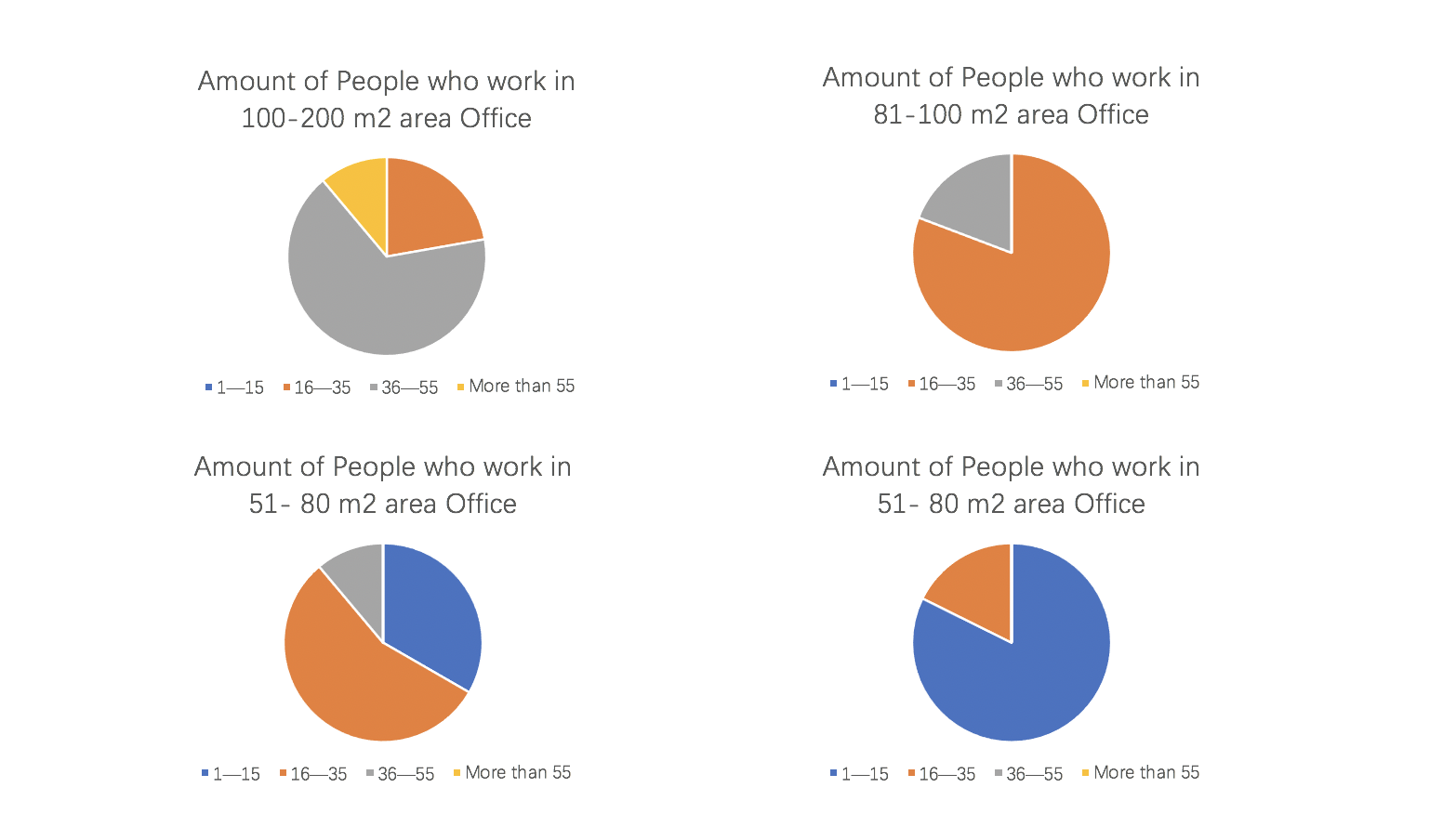
Insight
- Based on my interview before, I found employees are familiar with the term carbon neutral and learn about it from various channels, such as news, social platforms, company publicity and magazines. However, the specific implementation of carbon neutrality is not well understood. Most of them focus on carbon neutrality in daily life, while for corporate carbon neutrality, they hold the idea of following the arrangement of the company. It can be seen that their understanding of corporate carbon neutrality still need to be strengthened.
- Definition in different countries are a bit different, it depends on the specifics of the country. Clear definition of Carbon Neutrality in China still not showed officially.
- People had used to live in a Fixed working mode, their feelings about Carbon Neutrality are different. After comparing and analyze the feedback of my interview, I found what people really care mainly focus on:
- The future rule of the company
- In what aspects Carbon Neutral should be effect?
- How to monitoring data?
- Who’s going to help us monitor what we will achieve?
- The official definition of Carbon Neutral in China.
Based on my interview and persona, I have a better understanding of customers’ expectations and pain points, so I start to create my personas. There will be 3 personas I need to create, they worked in three distinctive companies, being in three different and special situation.
Part 2: EMPATHISE
Empathy Map
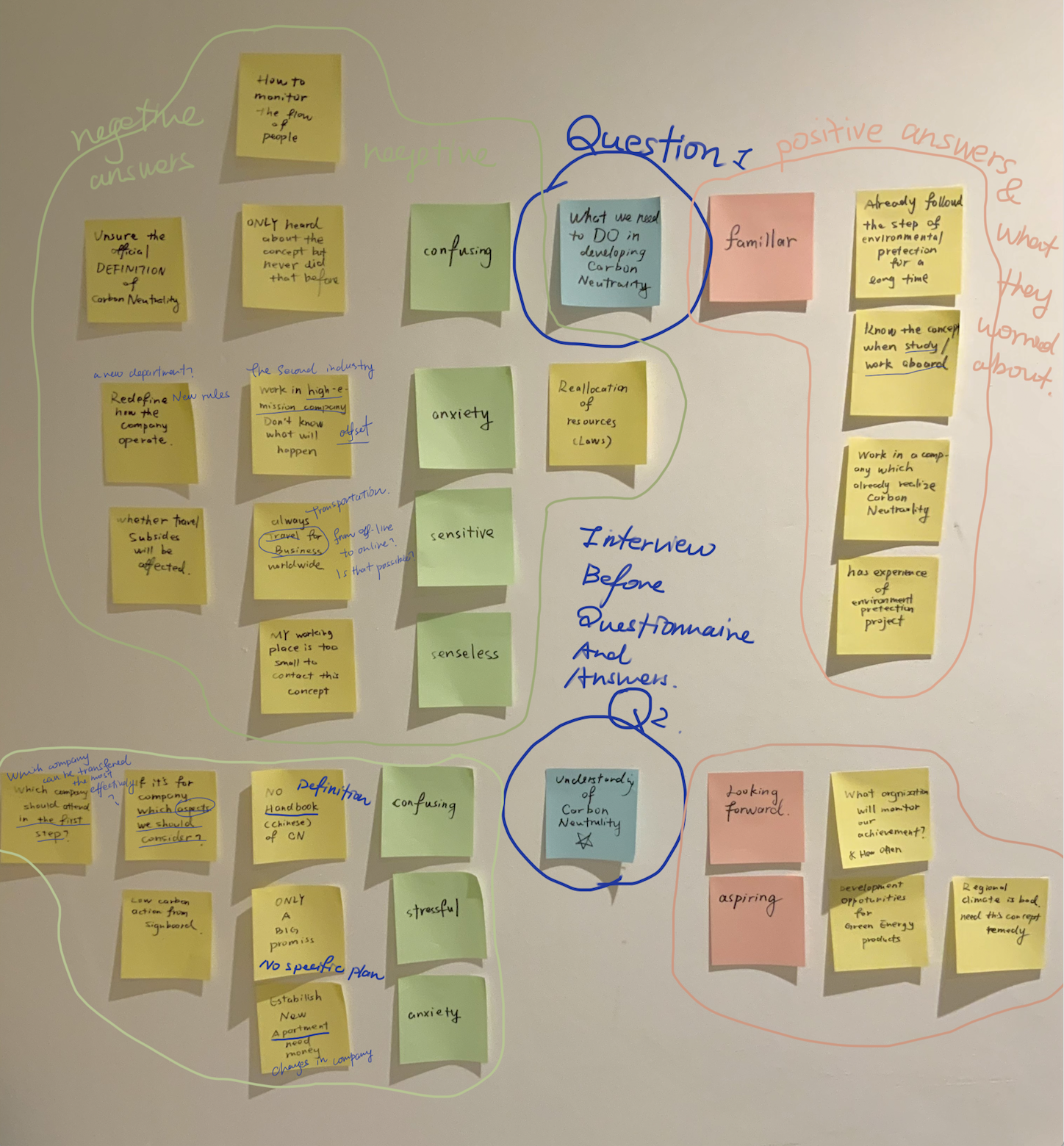
Persona
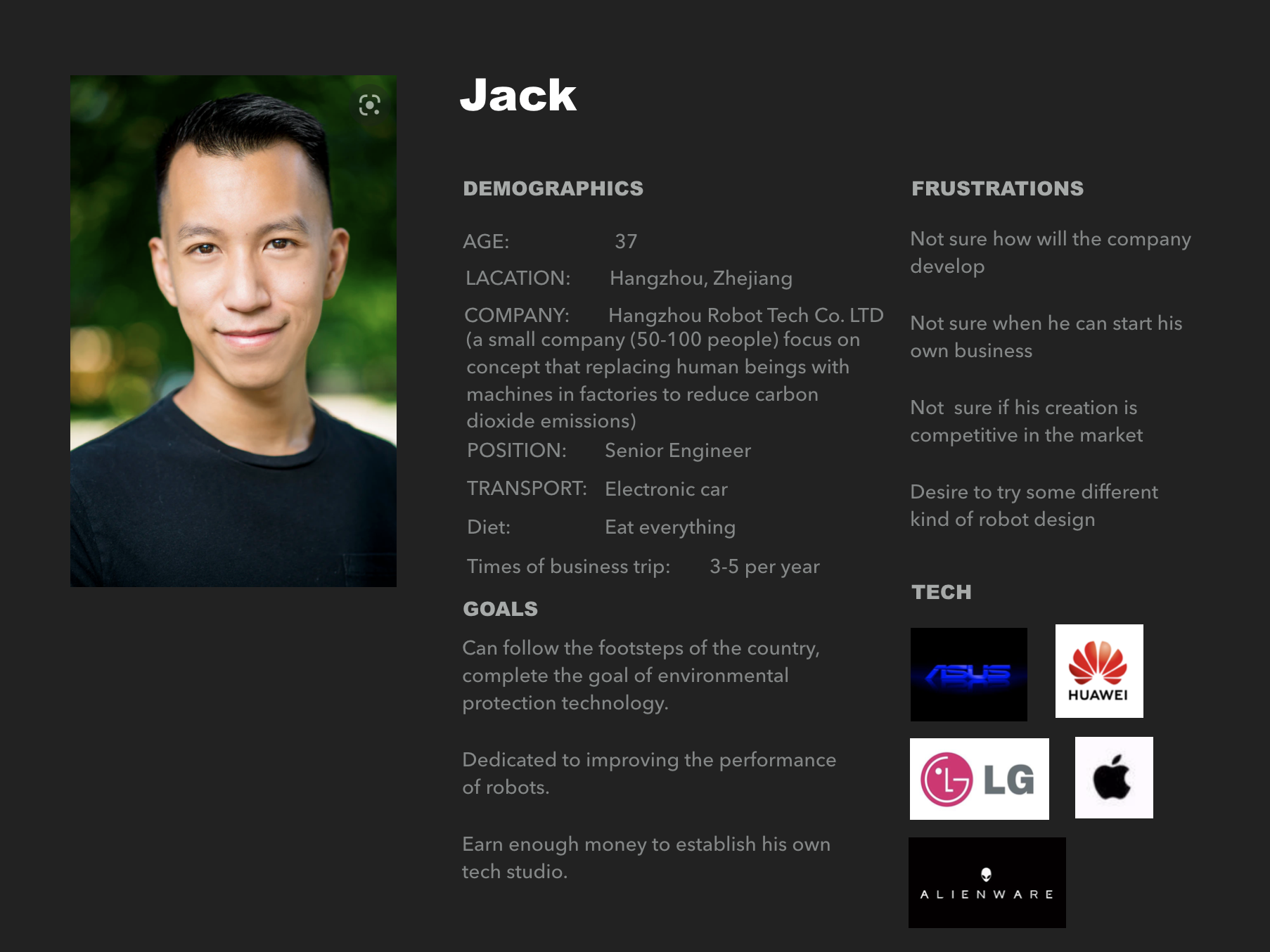
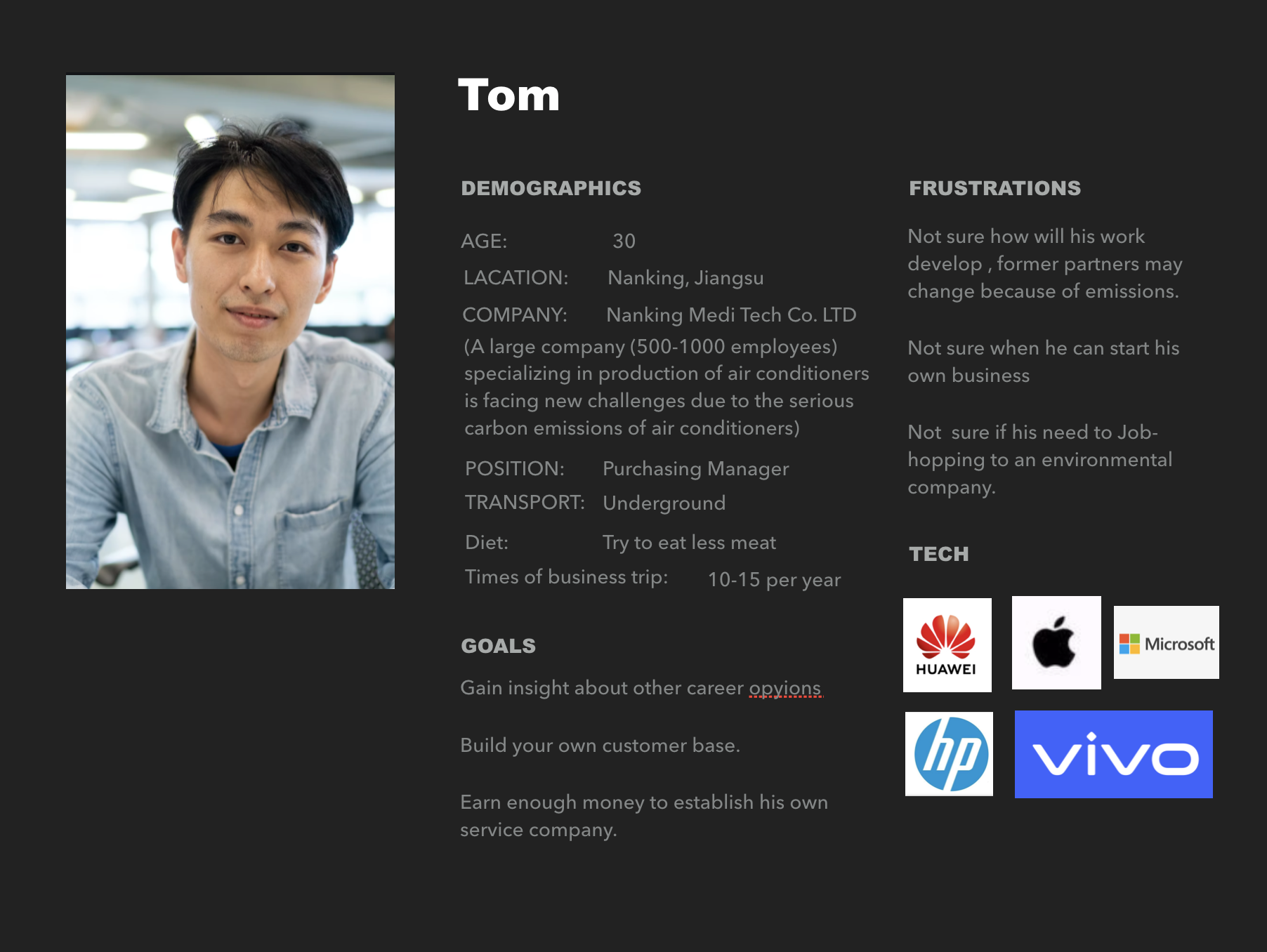
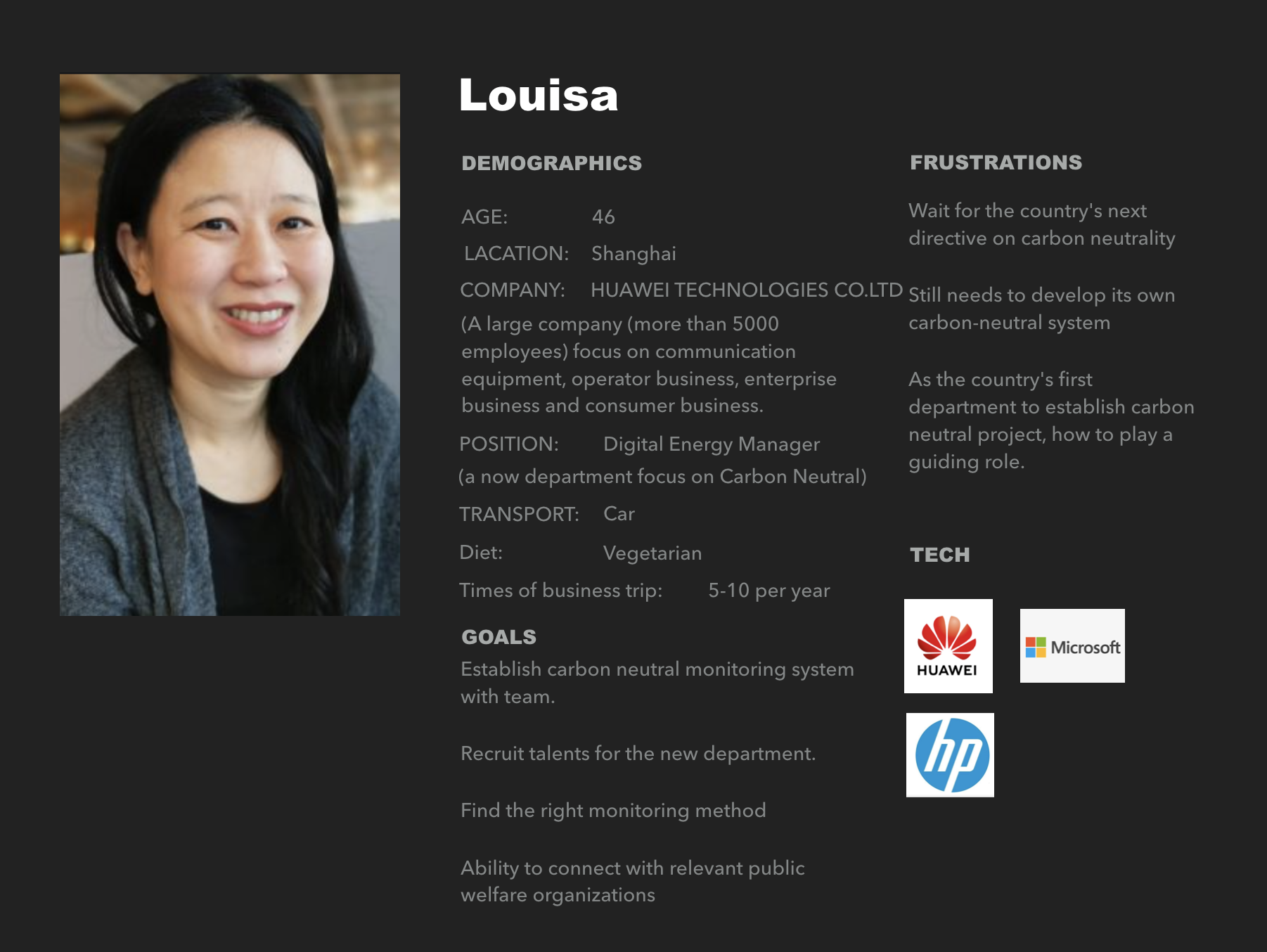
Scenario:
Home:
After the weekend, the carbon monitoring program (my app) started carbon detection mode again. Jack was ready to leave for work. As usual, he used a bike-sharing service and rode his bike to work, a distance of 1.4km and about 20 minutes.
Company:
When he arrived at the company,Jack planned to punch in with his mobile phone. The company’s punch in system was activated synchronously with the camera monitoring system and carbon detection system. The camera system has been modified and designed to automatically calculate the number of people in the office, the area of the office and the number of hours employees are in the office to calculate the carbon emissions of the people in the office during the day.
After getting to the seat,Jack began to check the two robot projects he was in charge of. The three robots in one project will be sent to Edison Hotel from the factory about 25 kilometers away today, with a total distance of about 8 kilometers, using a small bus. Jack opened the carbon detection app, turned to the office page, and entered the data and keywords of today’s project for winter. Then, he did preparatory work.
Restaurant:
At noon, Jack went to have lunch with his colleagues. They chose barbecue and ordered 5 plates of meat,2 plates of seafood,2 plates of vegetables and 4 cans of Coke. It takes about an hour to eat.
Factory:
After dinner, Jack got up and went to the factory to do quality inspection for the robot to be sent to the hotel. Due to a little time pressure, Jack chose to take a taxi to the factory (1.4km). After 10 minutes, he arrived at the factory and started quality inspection. An hour later, he and two other employees launched a minivan and took the robot to the hotel (8km). Stop at the hotel to install the robot, about 1.5 hours. After the assembly, the three chose the shared bikes to ride back to the company (2.5km) and began to record the day’s journey.
Company:
After work, Jack clocked in and rode the shared bike home. After returning home, the APP got the following data:
Carbon consumed at work: XXX
—— in offices today: XXX
—— at lunch today :XXX
Travel today: Company-Factory carbon consumption: XXX
—— factories and hotels: XXX
—— robot assembly in a hotel: XXX
—— hotel-company : XXX
Off-duty carbon consumption: XXX
Total carbon consumed today: XXX
Whether to save carbon emissions? If yes, it will be saved to monthly C-emissions statistical, payment can be made in one week. Or choose afforestation and other environmental protection programs, using the way of donation, which can not only not affect the carbon credits, but also increase credibility.
If no, he need to pay for the Carbon credits, If he refuses to pay, his carbon credit will be reduced, it will affect the carbon credits of the entire office and affect the quarterly bonus.
After determining the figures and scenes, I began to think about what content my app should contain. They must be specific to the operation of the company, and they need to consider more than individuals, which will help the company to conduct effective carbon statistics.
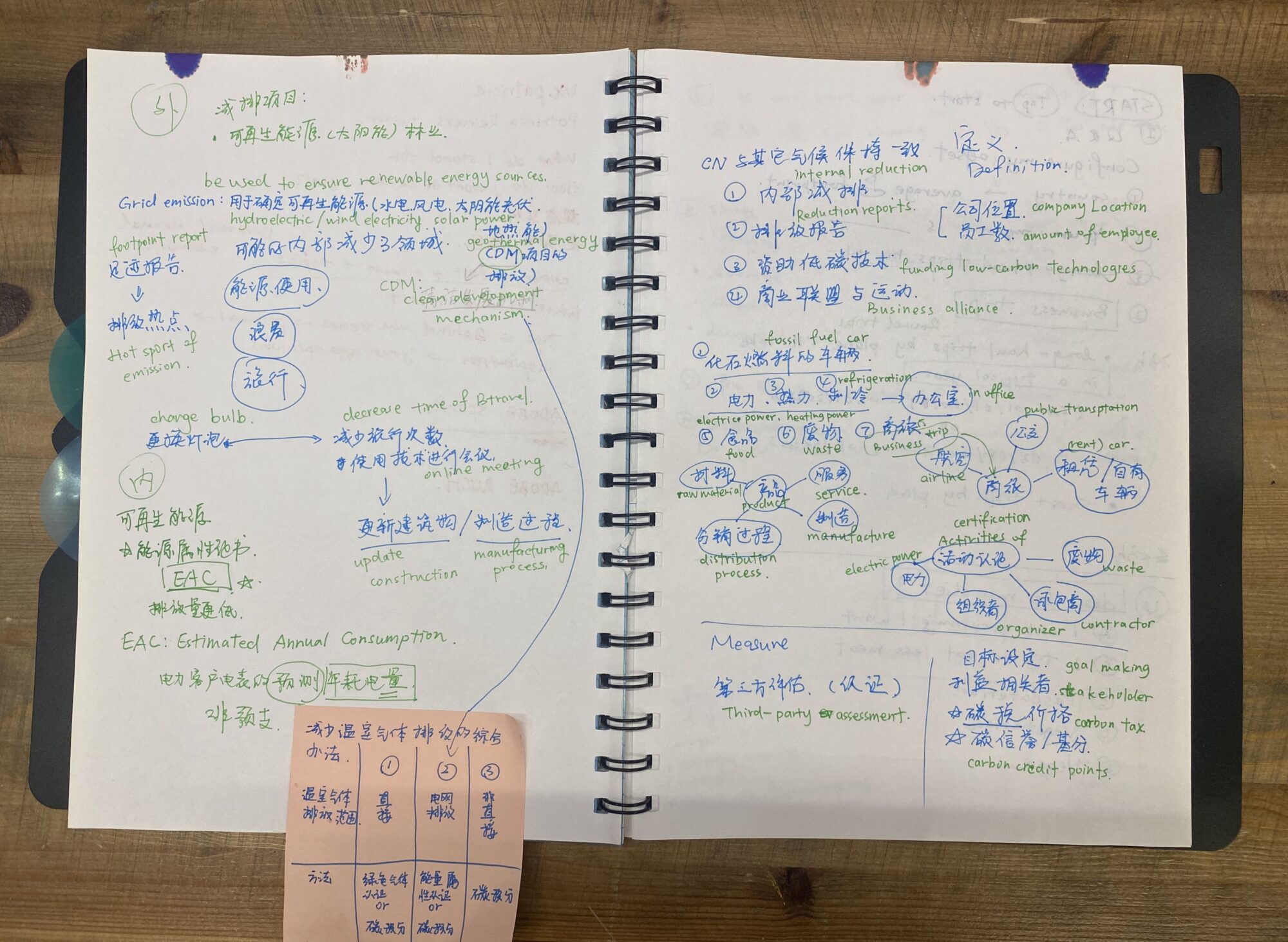
This is my thinking and research notes, it contains most of the things that i should considered to add into the function. As a staff, there are 4 elements related to their in their working day: Environment, Projects, Business trip, Activities and Food. Besides, there r also some methods to support us offset our carbon emission, such as Internal mitigation proposals, tree planting project, renewable energy development projects and green-construction-building project.
After that, I start to think about How to subdivide these contents and express them in a logical way.
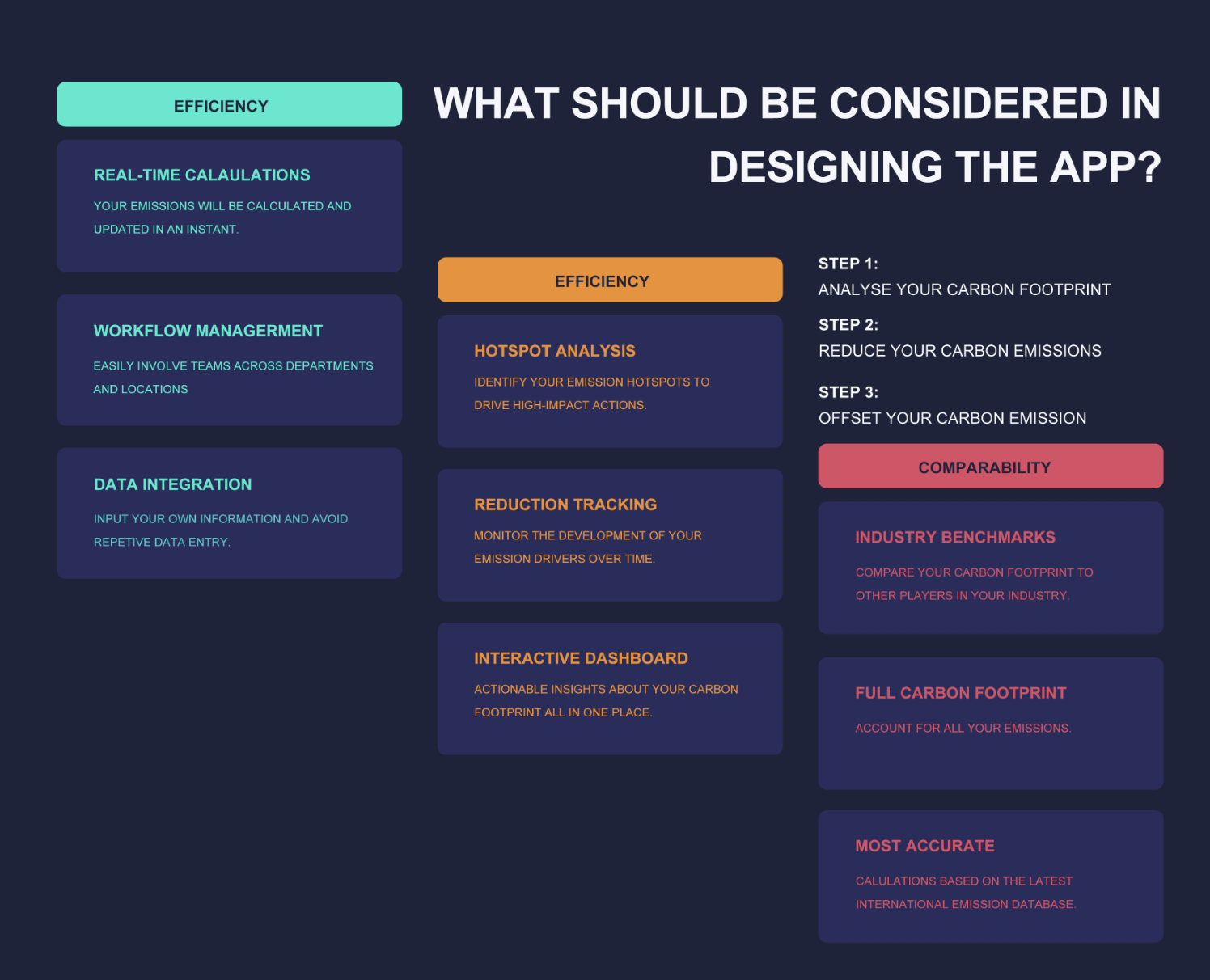
Working Flowchart Sketch:
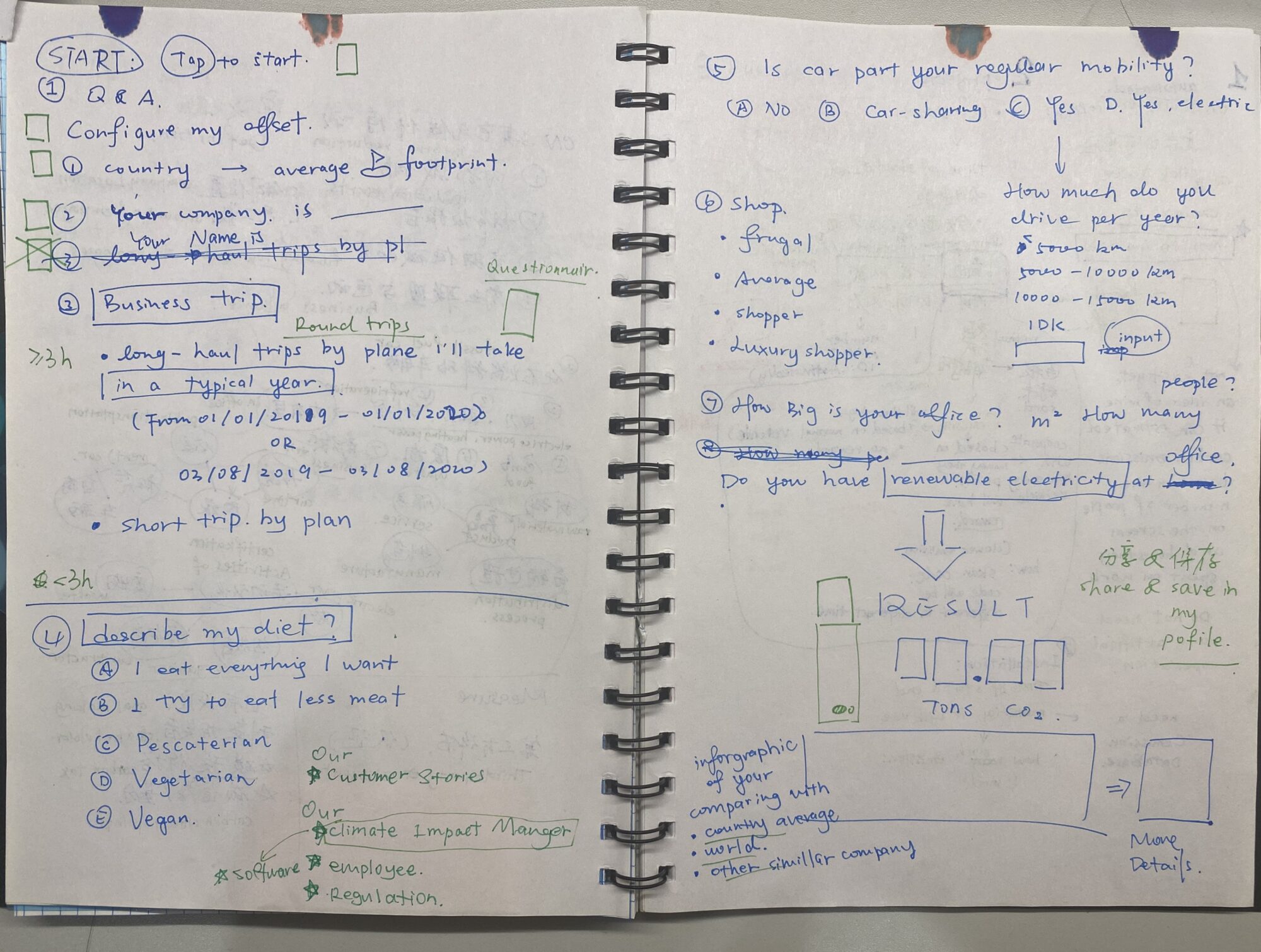
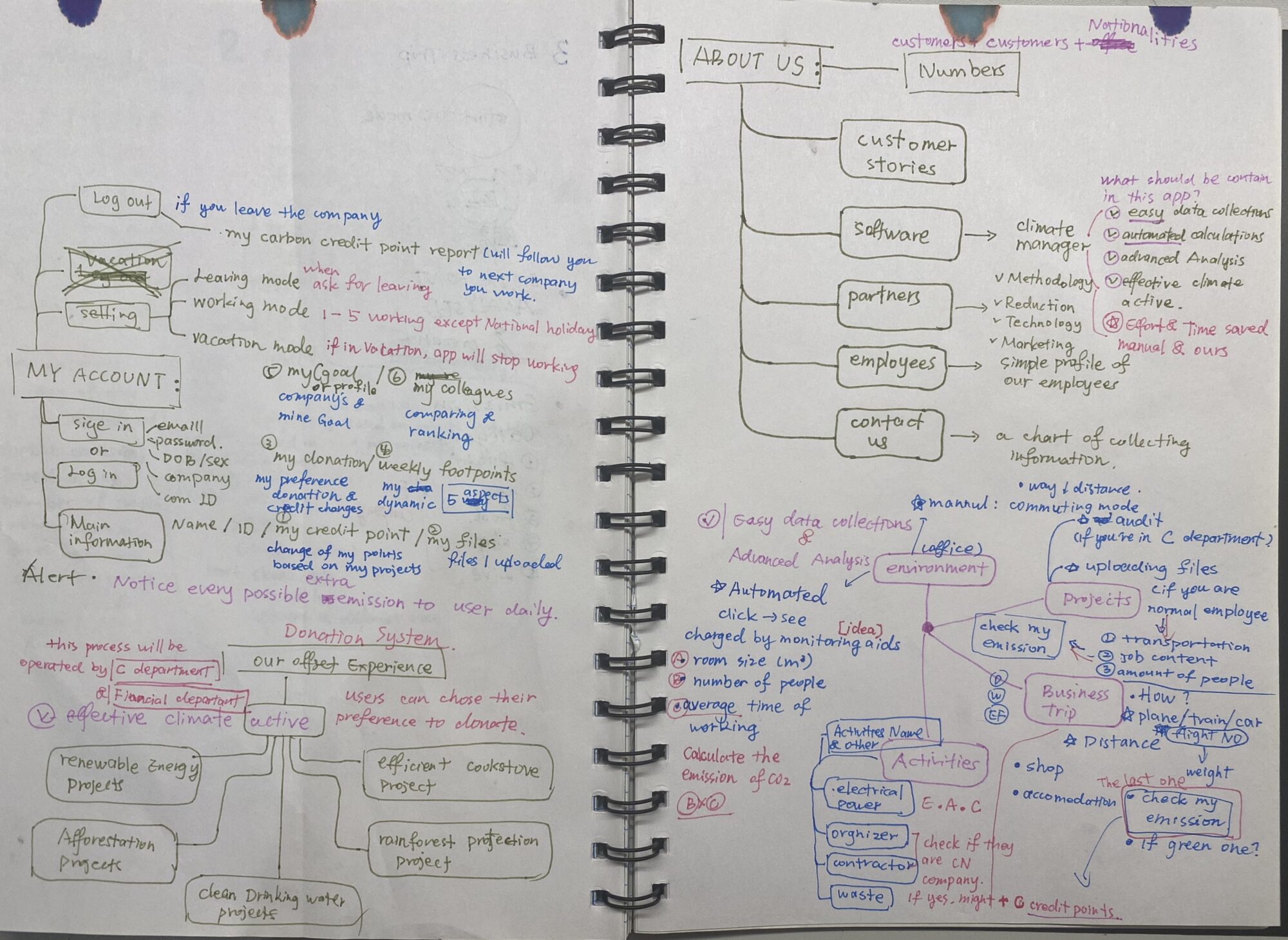
After that, I start to create my digital frame diagram. I changed some details in this step based on my discussing with my target audience. Considering that all companies that carry out the comprehensive carbon plan will establish a carbon neutral department, reducing the burden of other departments is necessary in terms of data uploading and review. Through scanning and identification, employees can upload the data to the carbon neutral department, and they can use the relevant data to conduct accounting and input reports.

Based on my notes, I divided my app into 3 parts. The APP has three main lines.
The first is My Account, which will store everything about me, such as my files, my carbon credits, my carbon footprints, my carbon donations(offset experience), my goals, and my colleagues.
The second is HOME. We can set our mode(working mode, vacation mode and dimission mode). We can book our business trip, project and activities directly. Besides, I also set a JOIN US function, because I believe this app will be developed to a group with the time goes by, more functions will be created and existed functions will be implemented constantly. And user can also find My Account and About Us on the navigation.
After that, I start to draw my interface. In order to understand more about business app, I constantly looked for different kinds of business for reference.
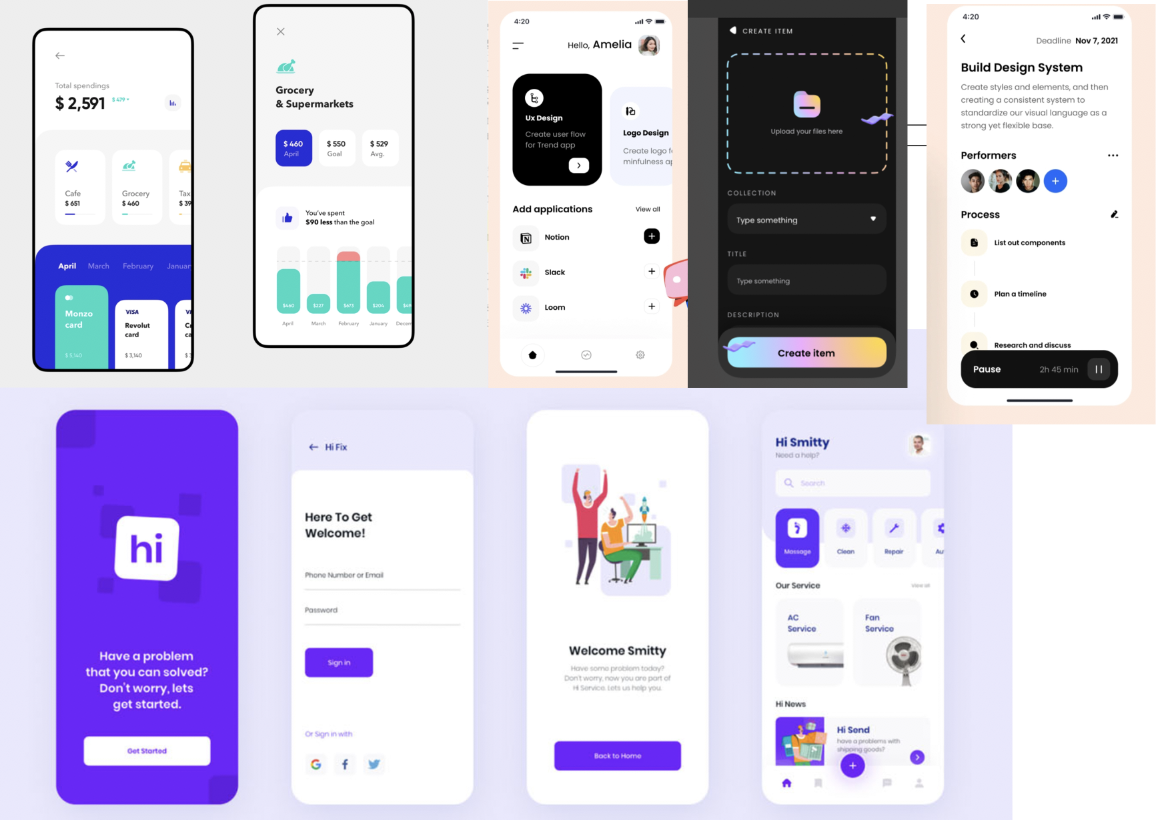
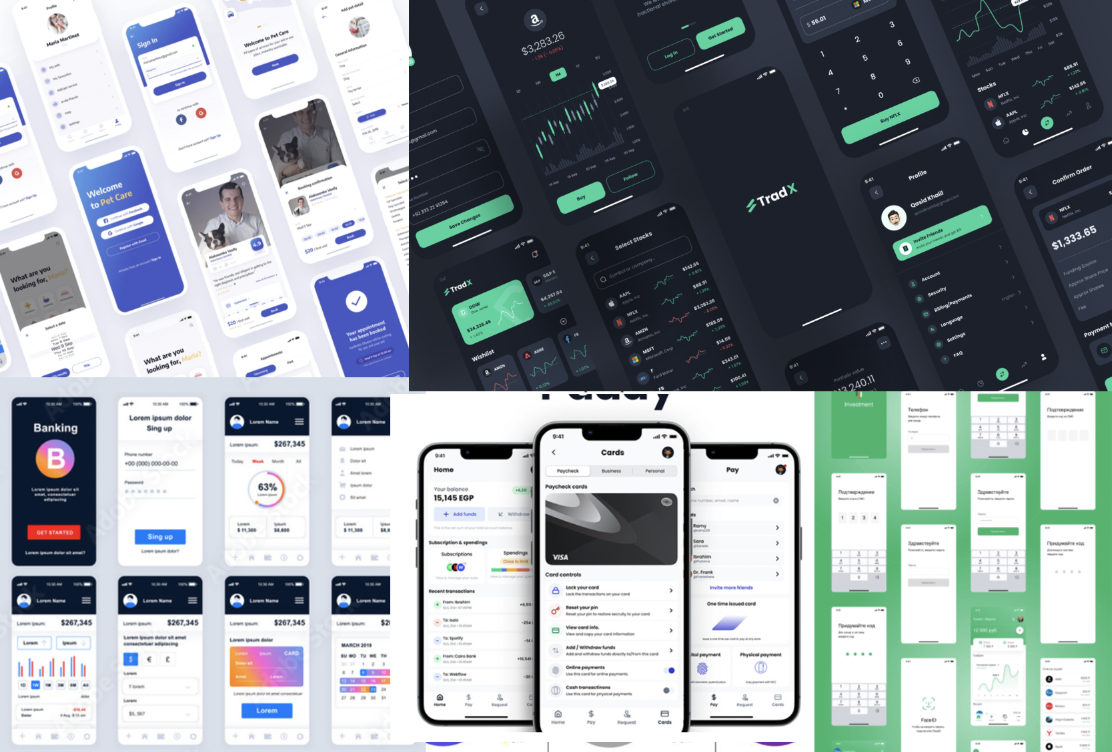
Insights:
1.Clear workflow
2.No more than 3 colors
3.Data visualization
4. Concise
5. Big color lump
6. No illustration
7. Line
8. Cold or neutral tone
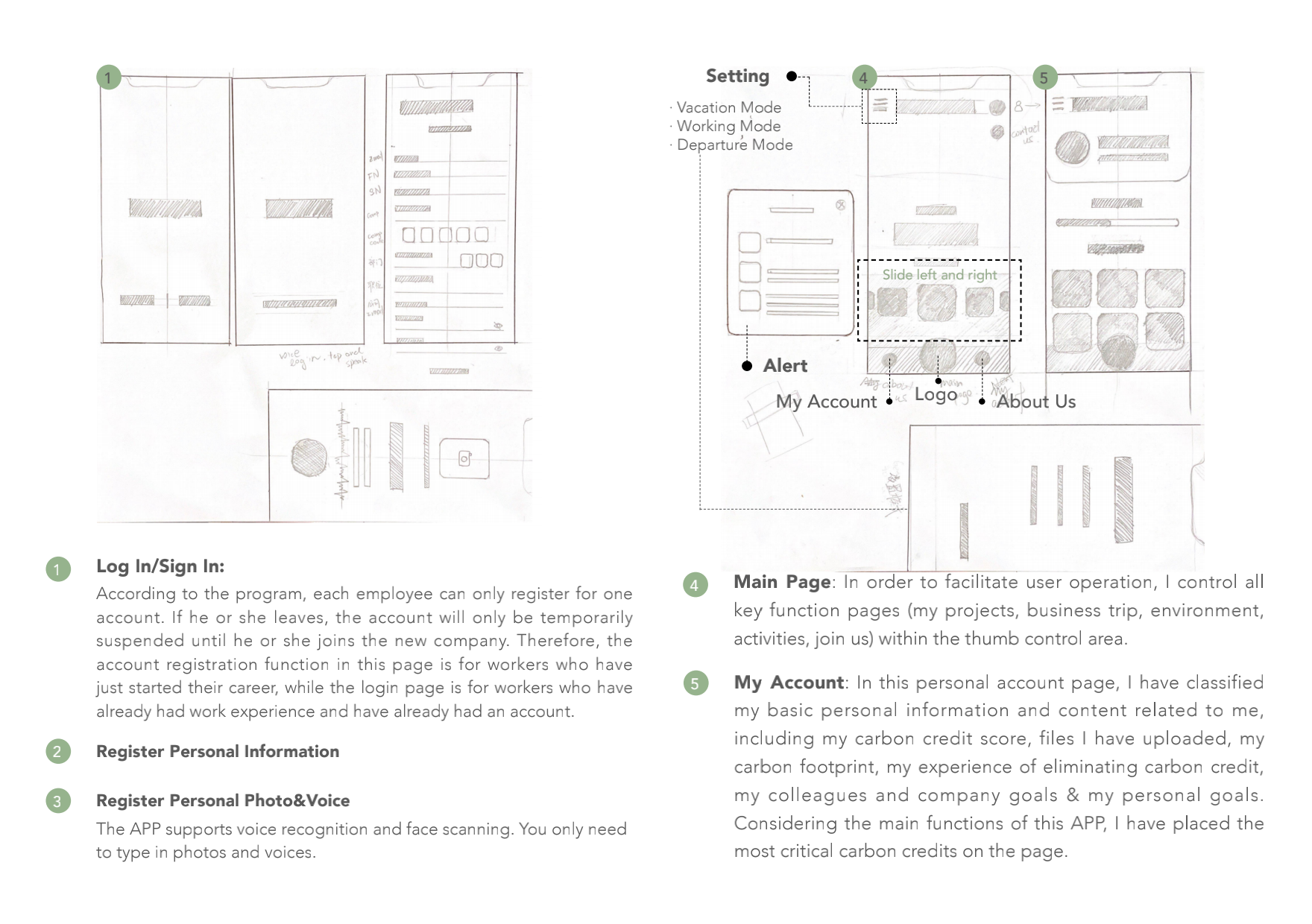
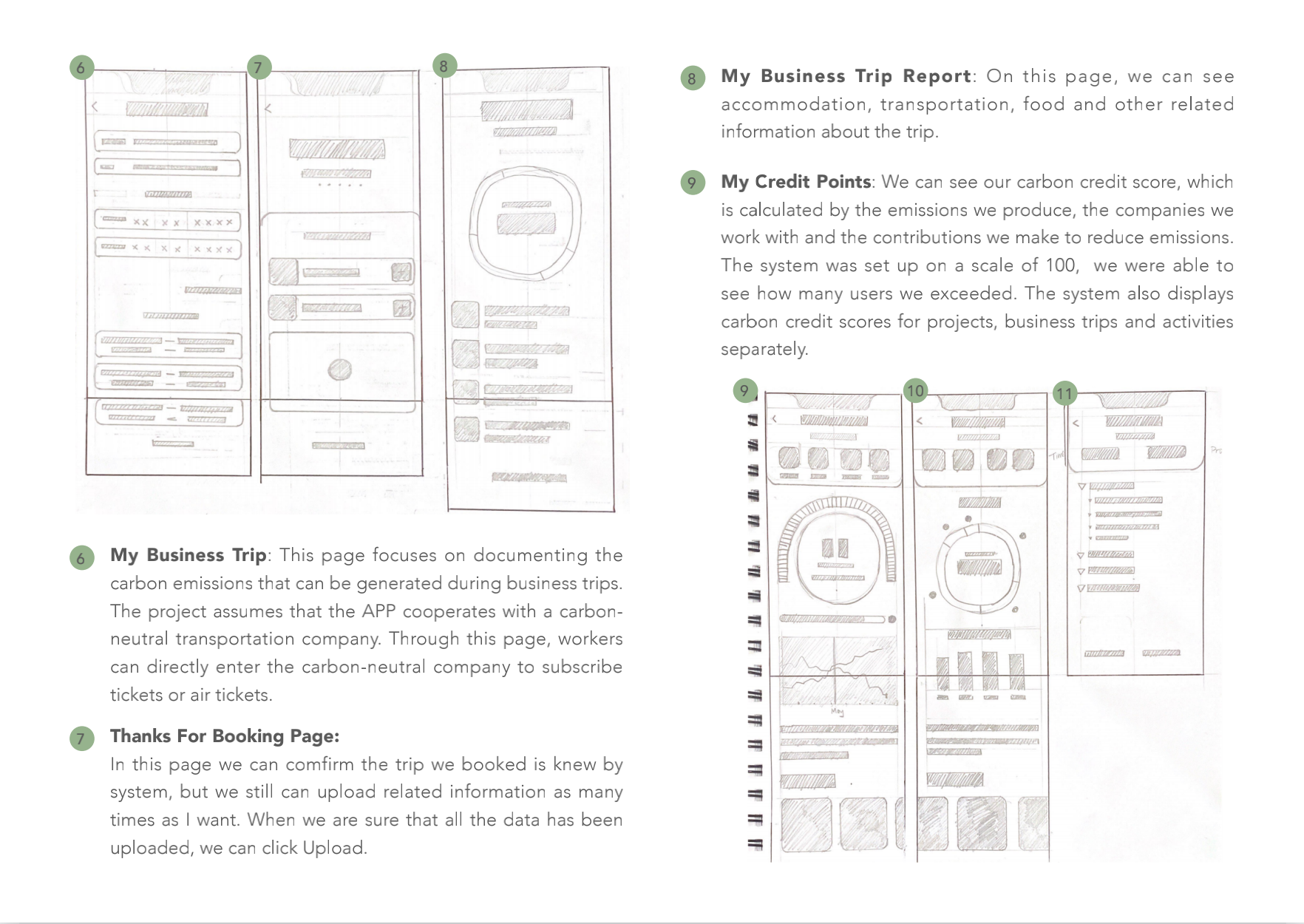
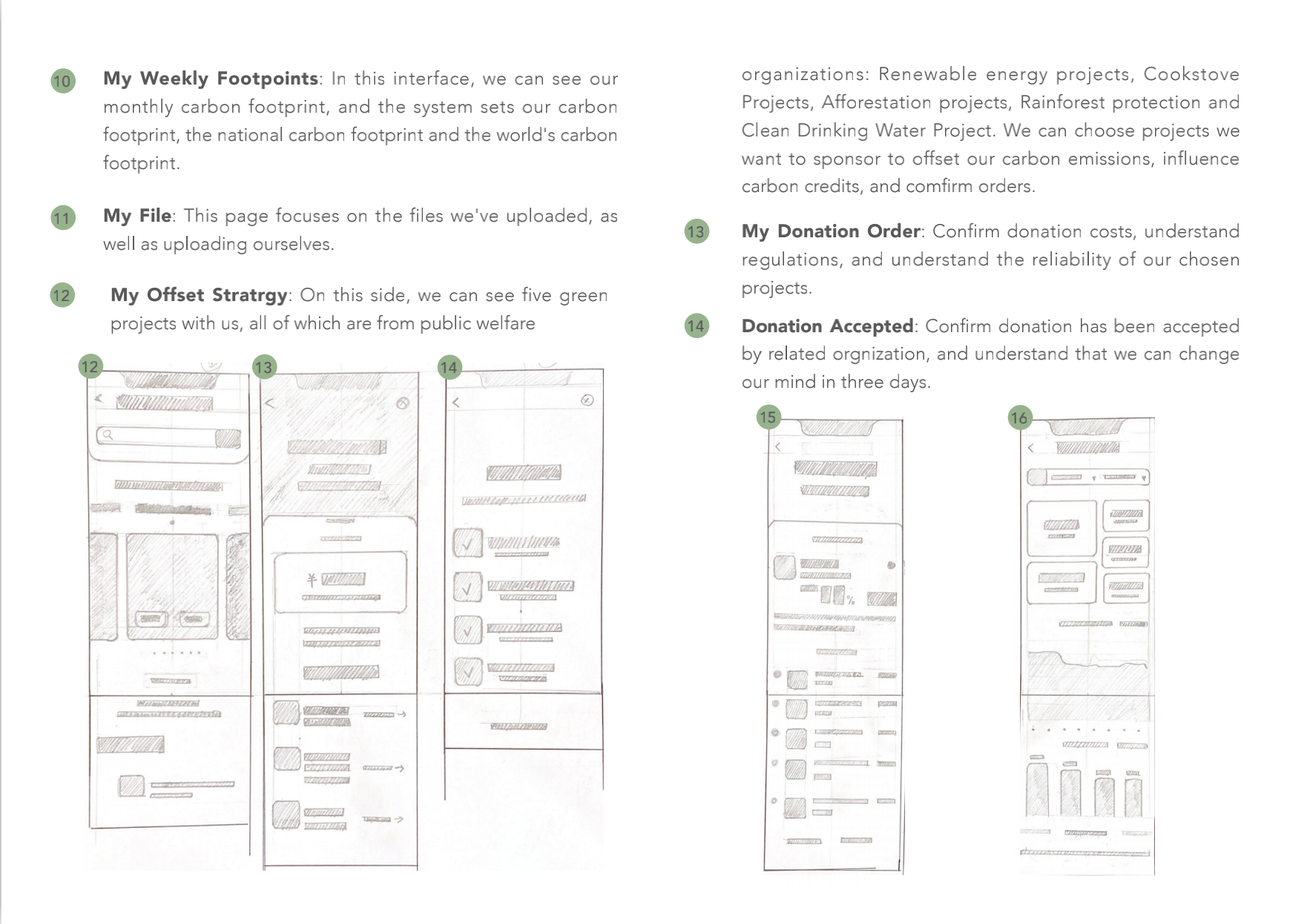
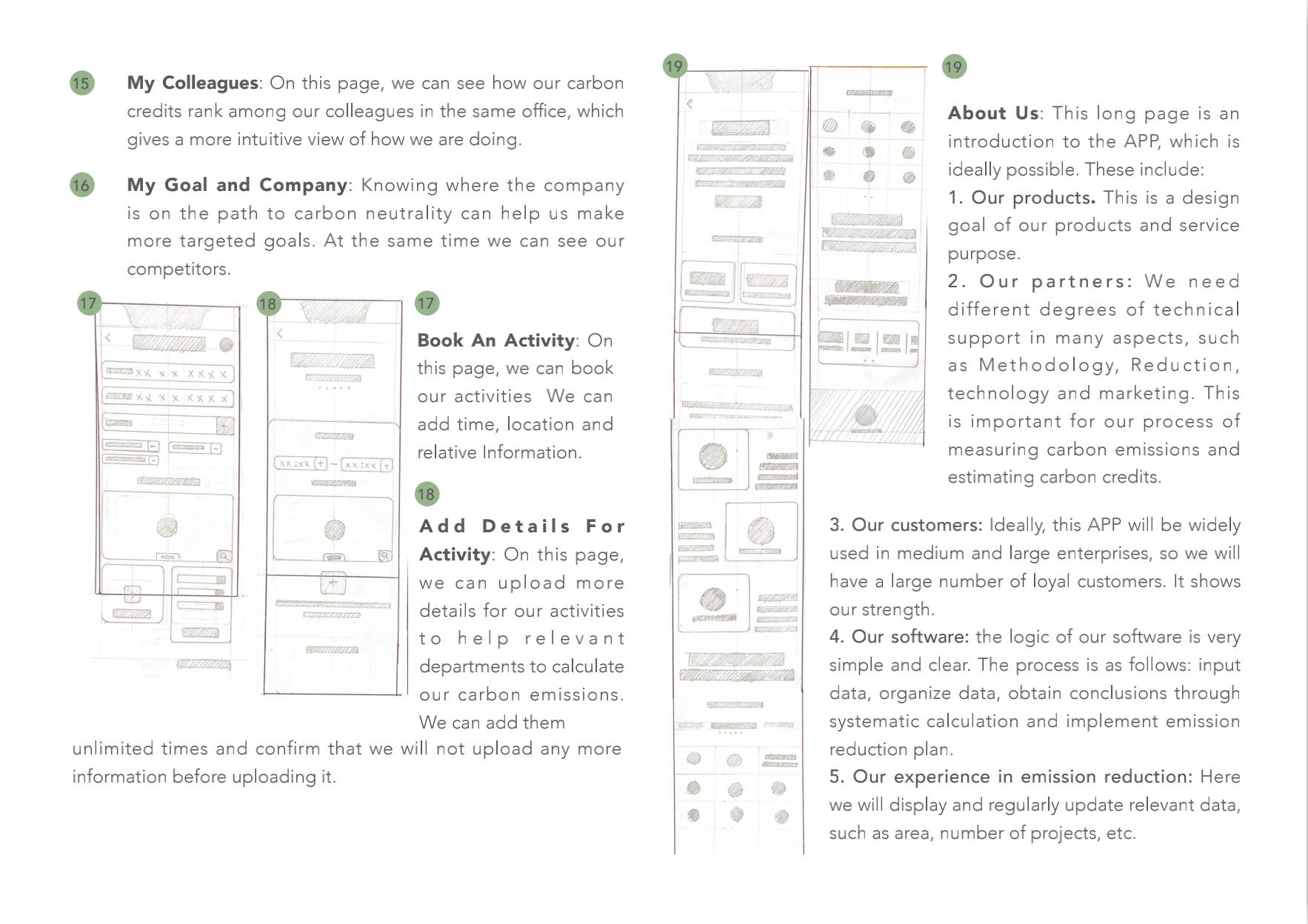
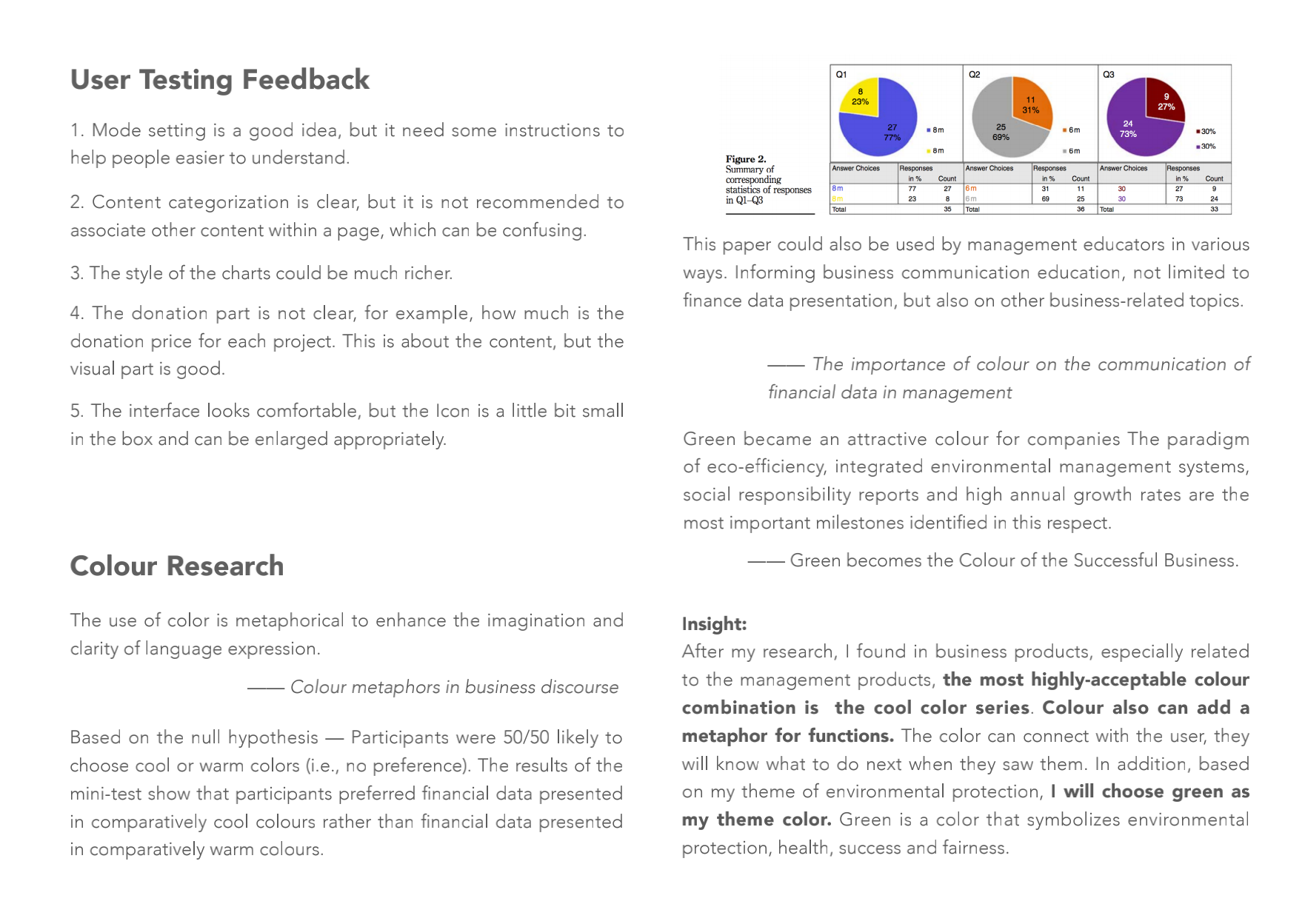
Colour Research
Choice of the colour of collocation in business products is very limited, i need to make sure that each color i selected can represent the meaning of the metaphor and deepen understanding. Looking beautiful is not the priority , what can be very easy to connect with the customer is the key point. The most ideal state can be saw this color will be able to understand what should I do, or how to operate in the next step. In order to understand more about metaphor, i start to look for some academic paper.

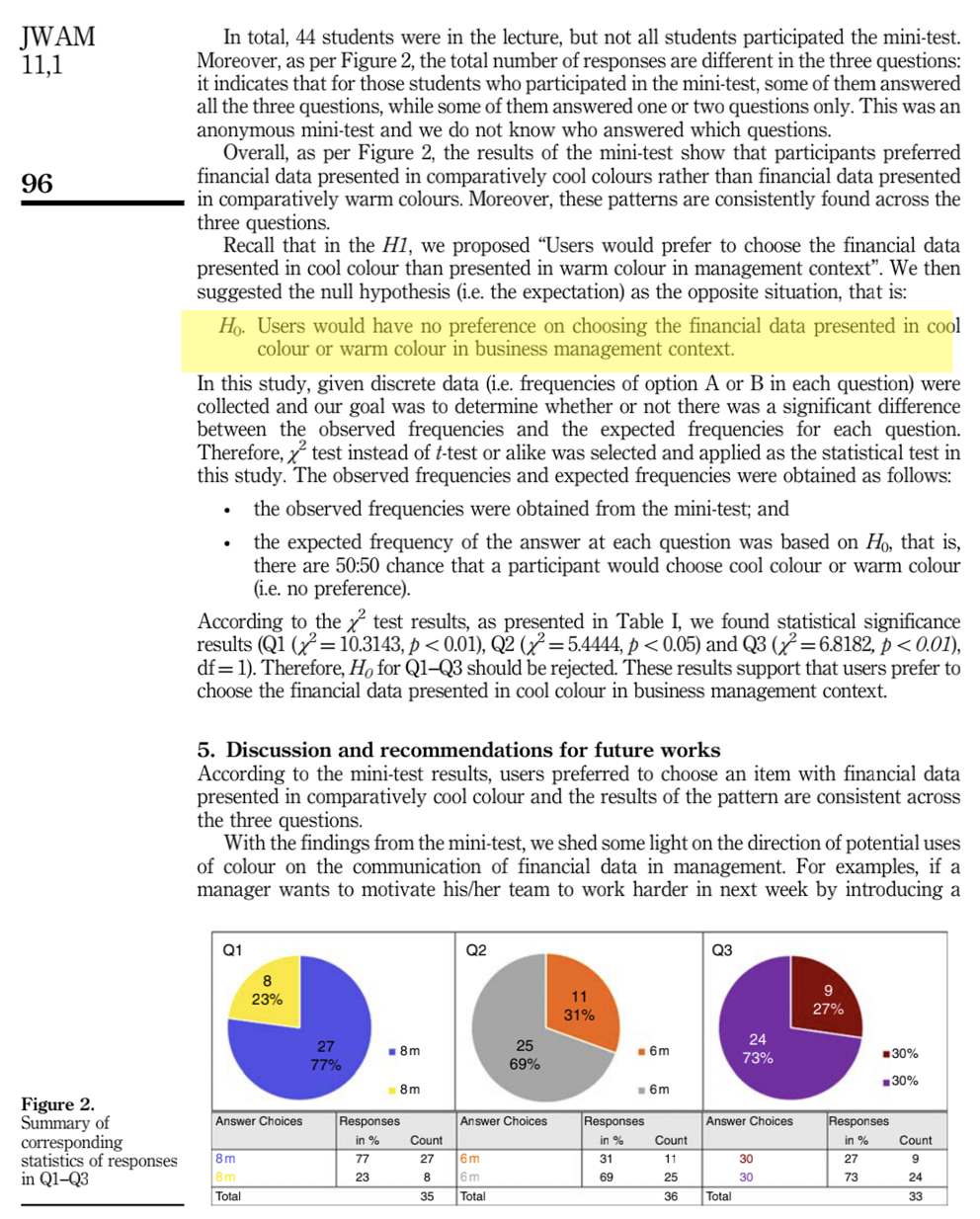
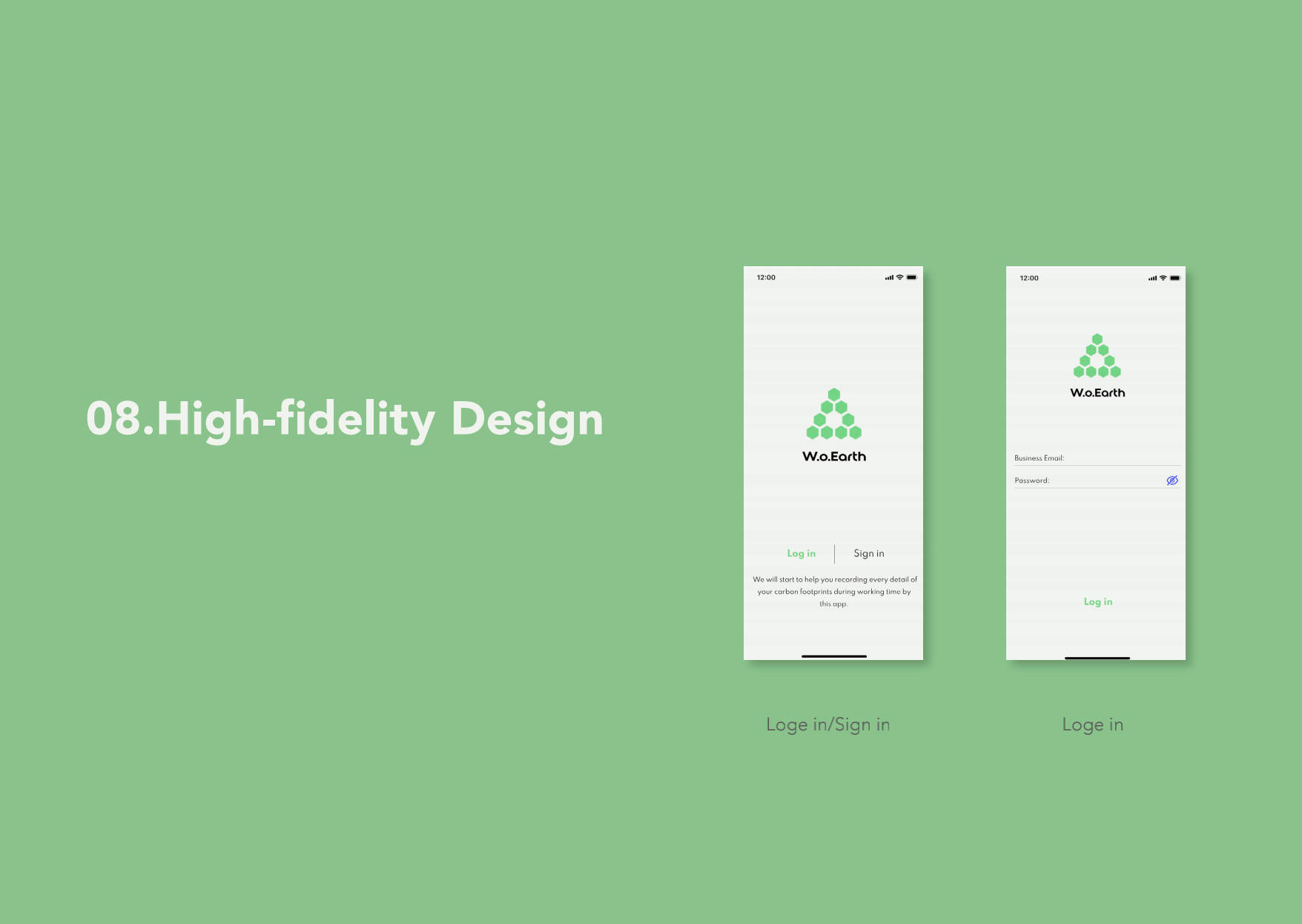
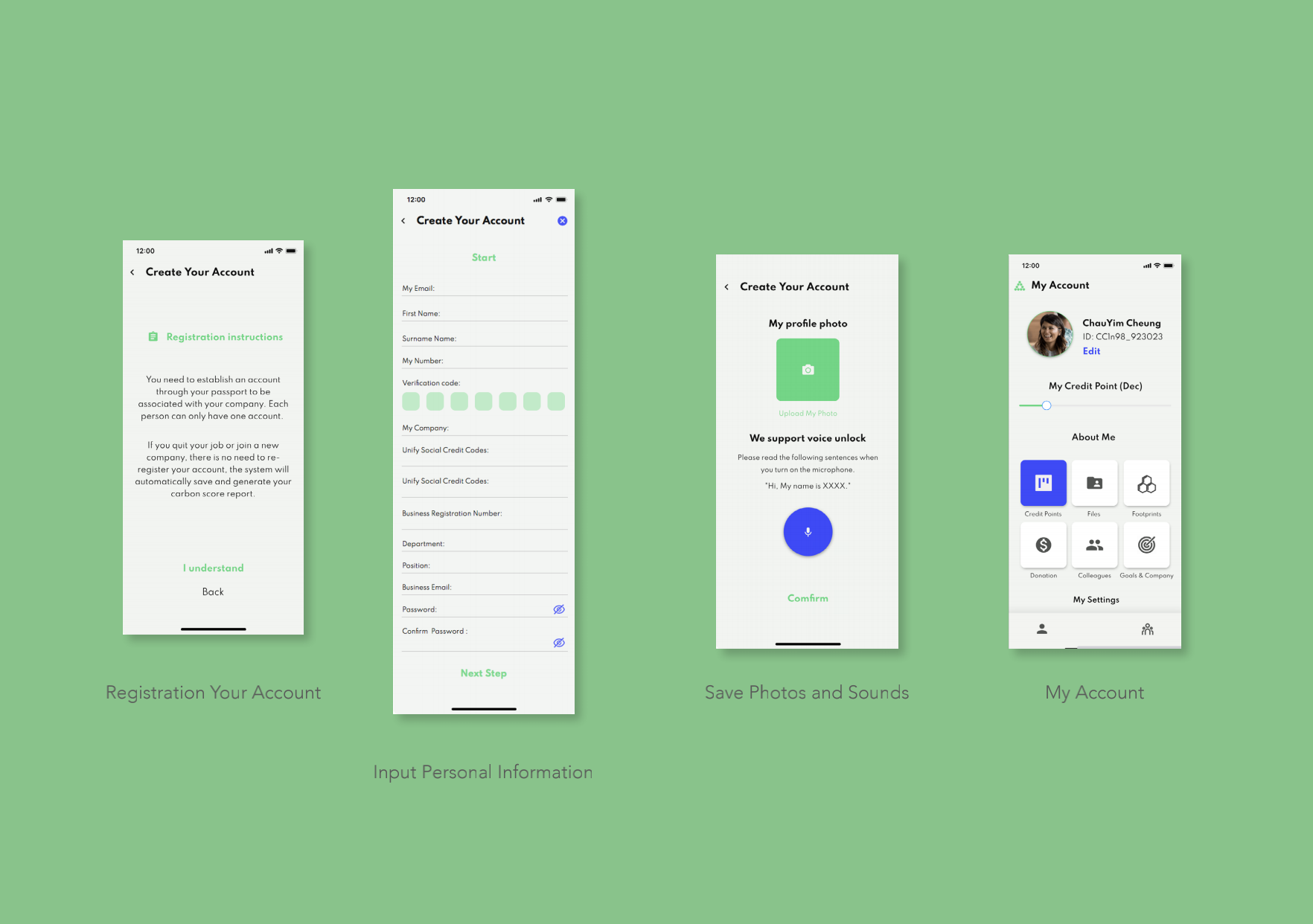

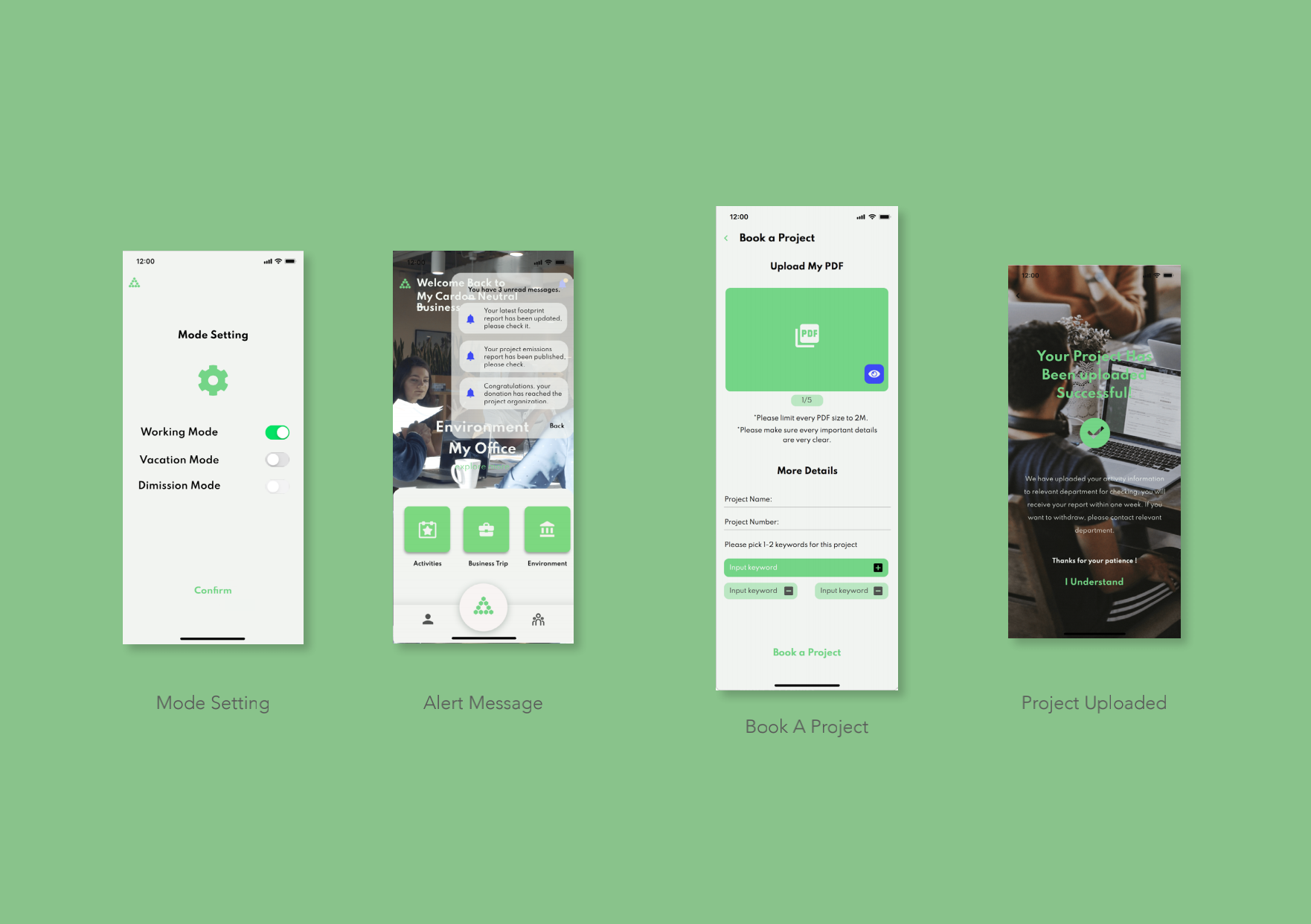
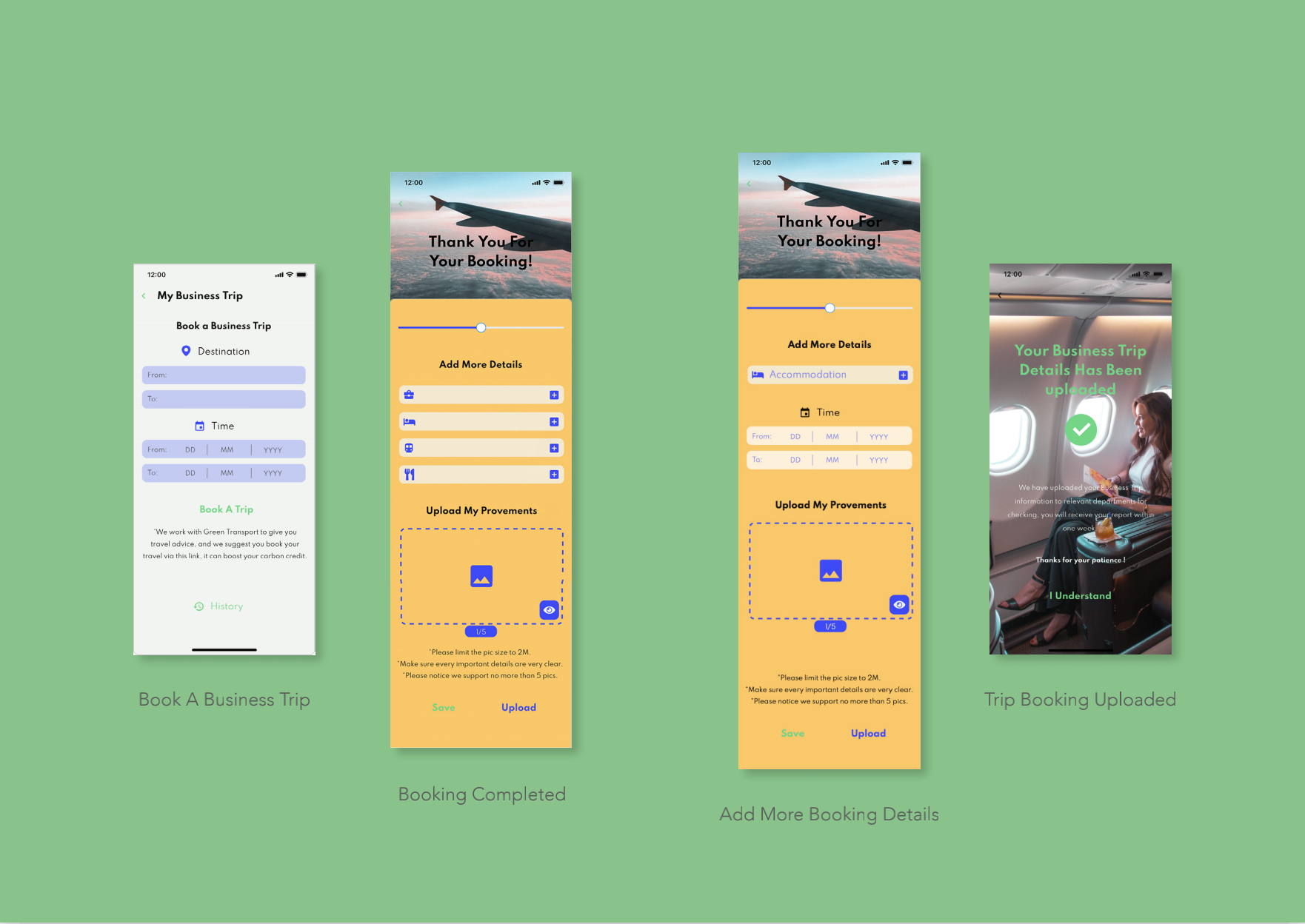
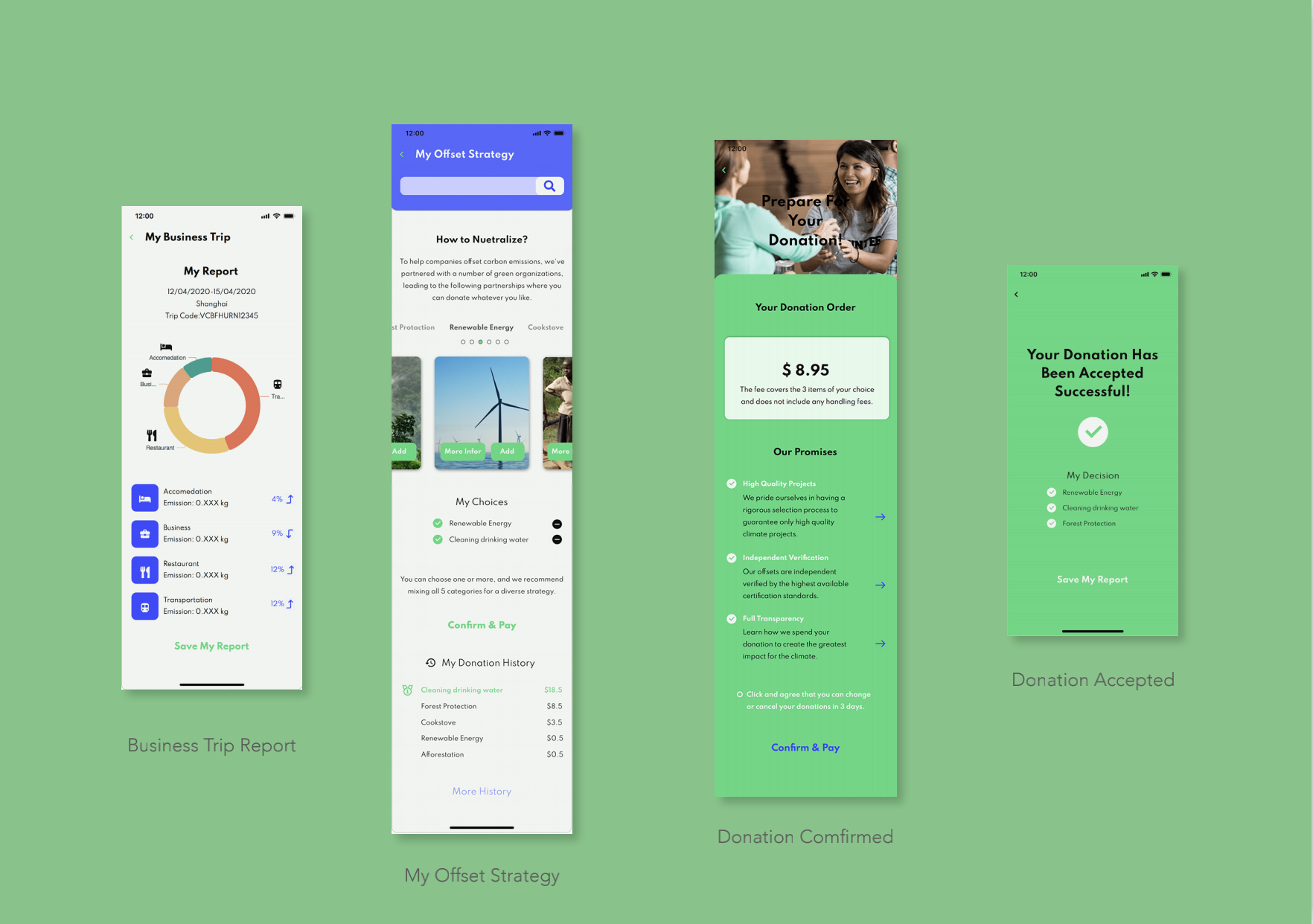
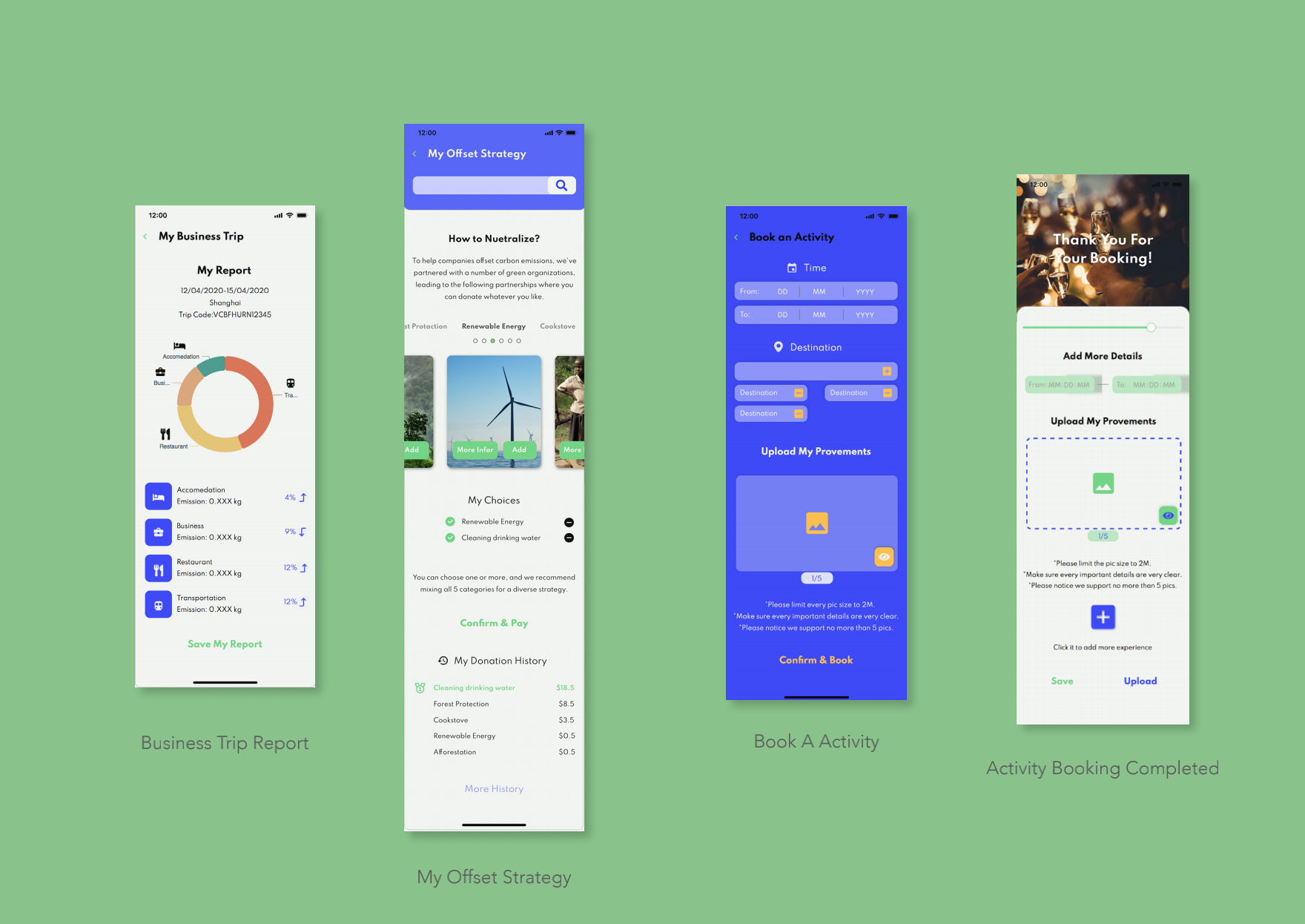
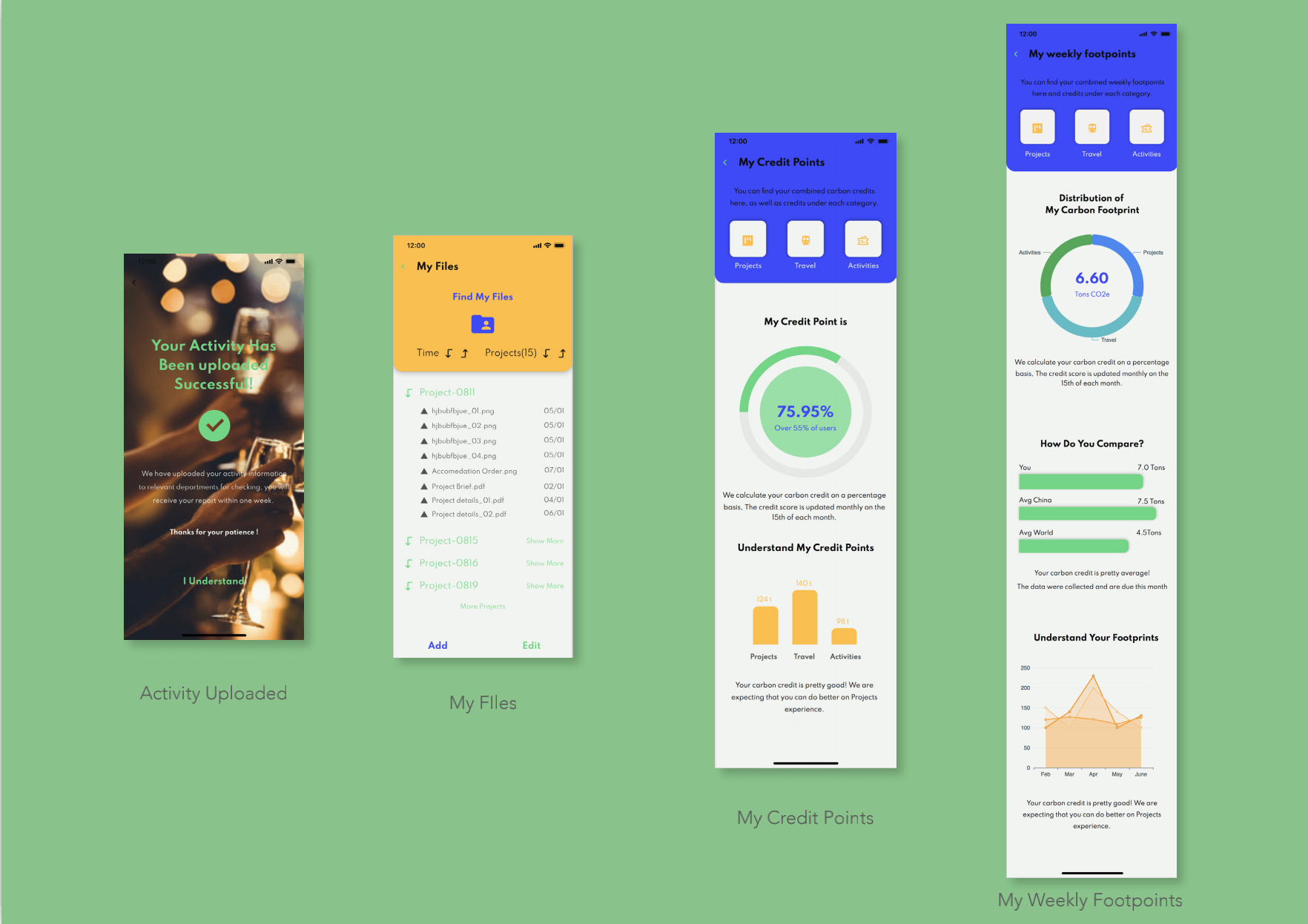
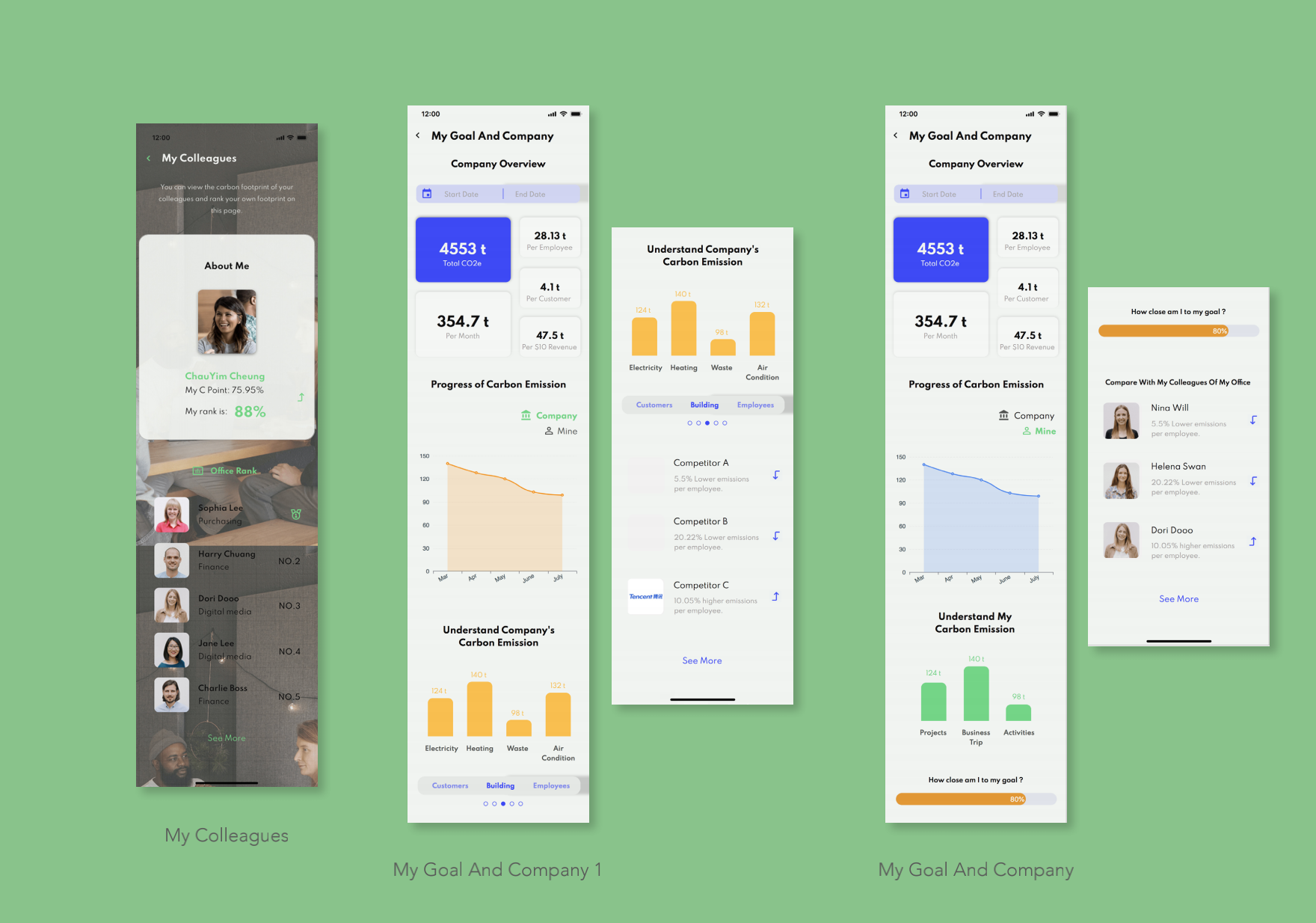
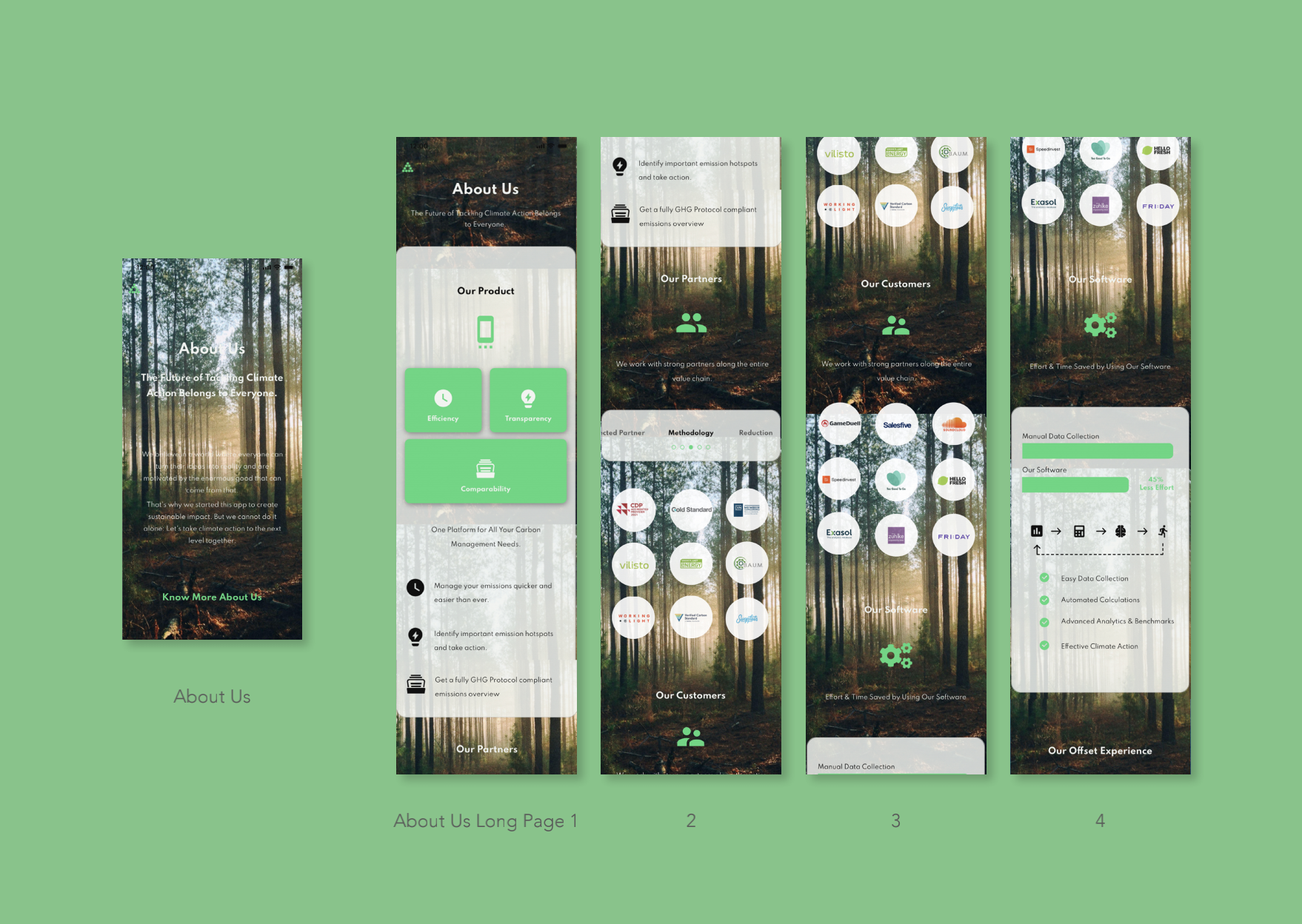

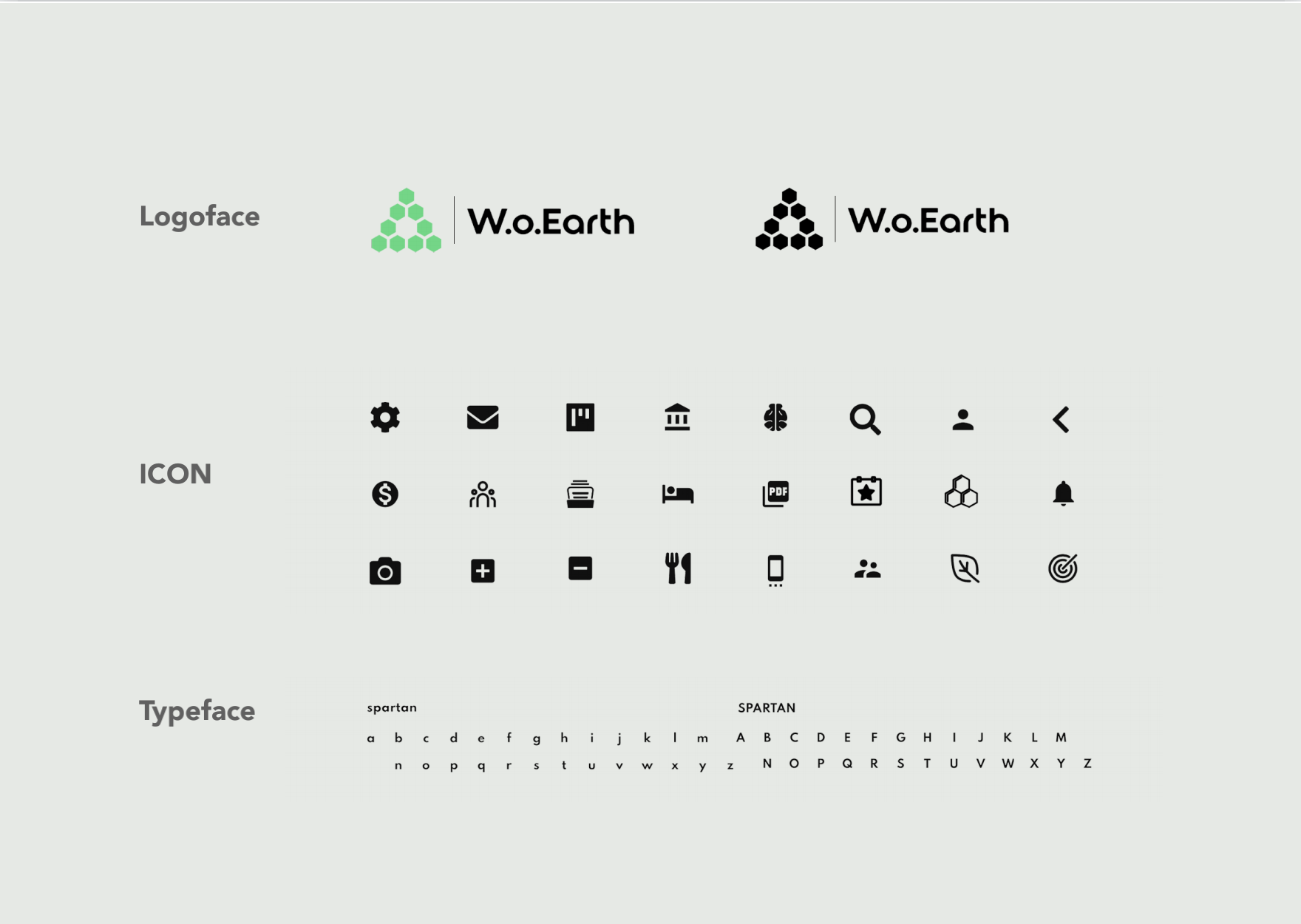
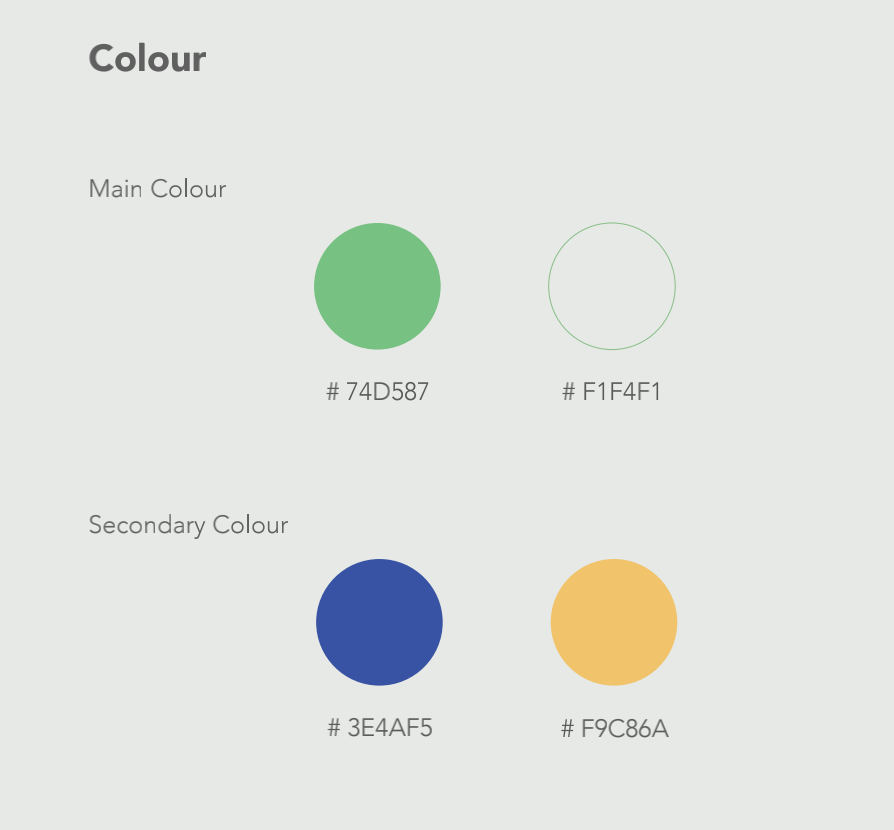
APP Model
Please scan the code to play the app!

APP Display
